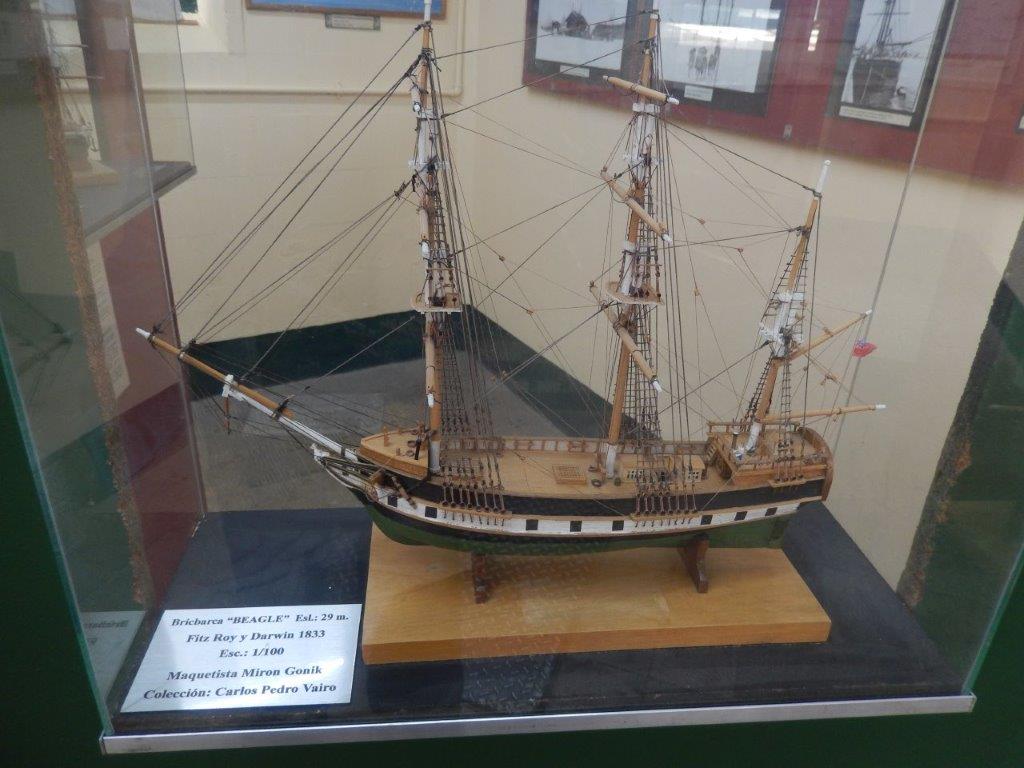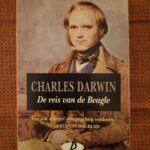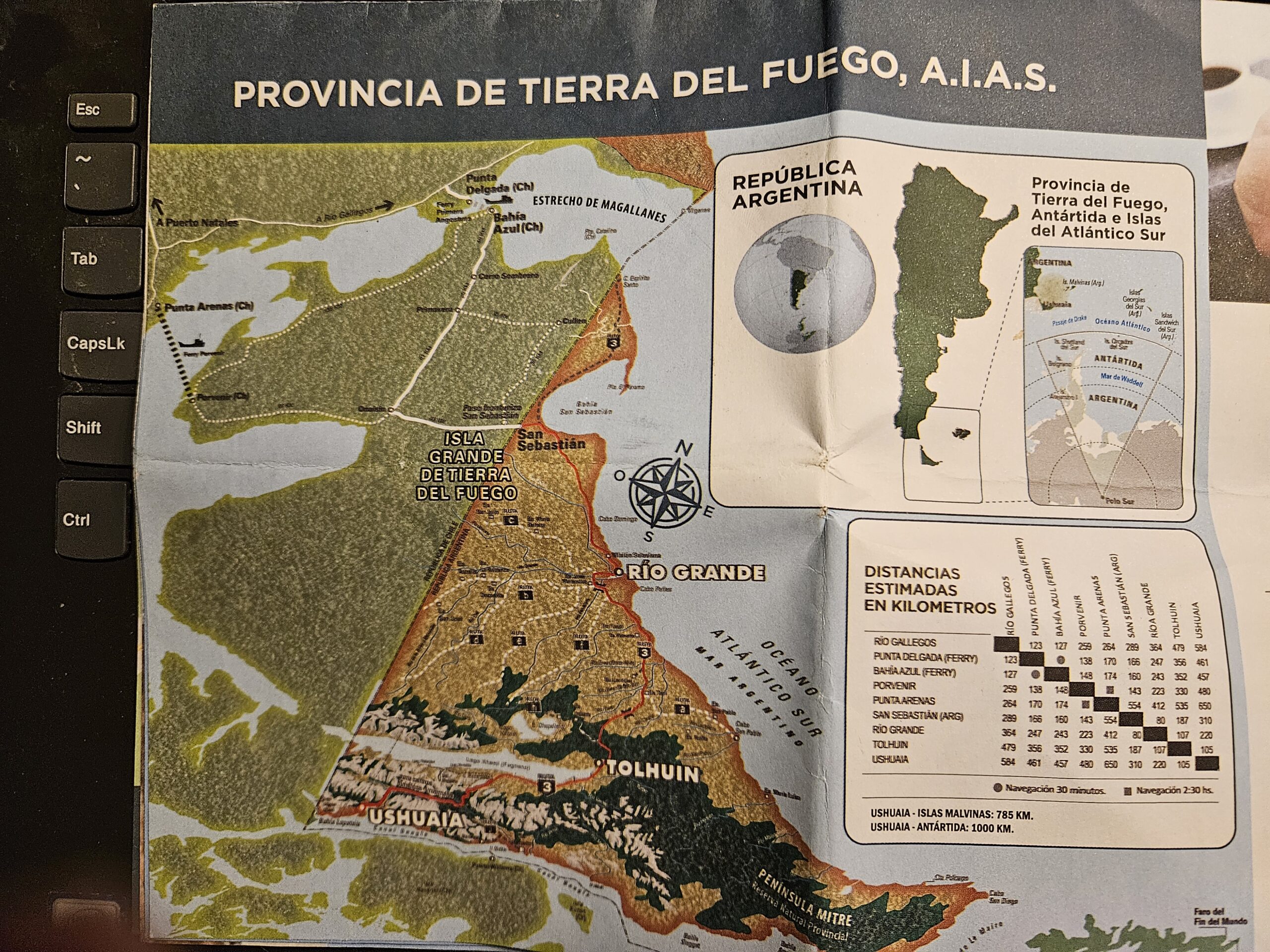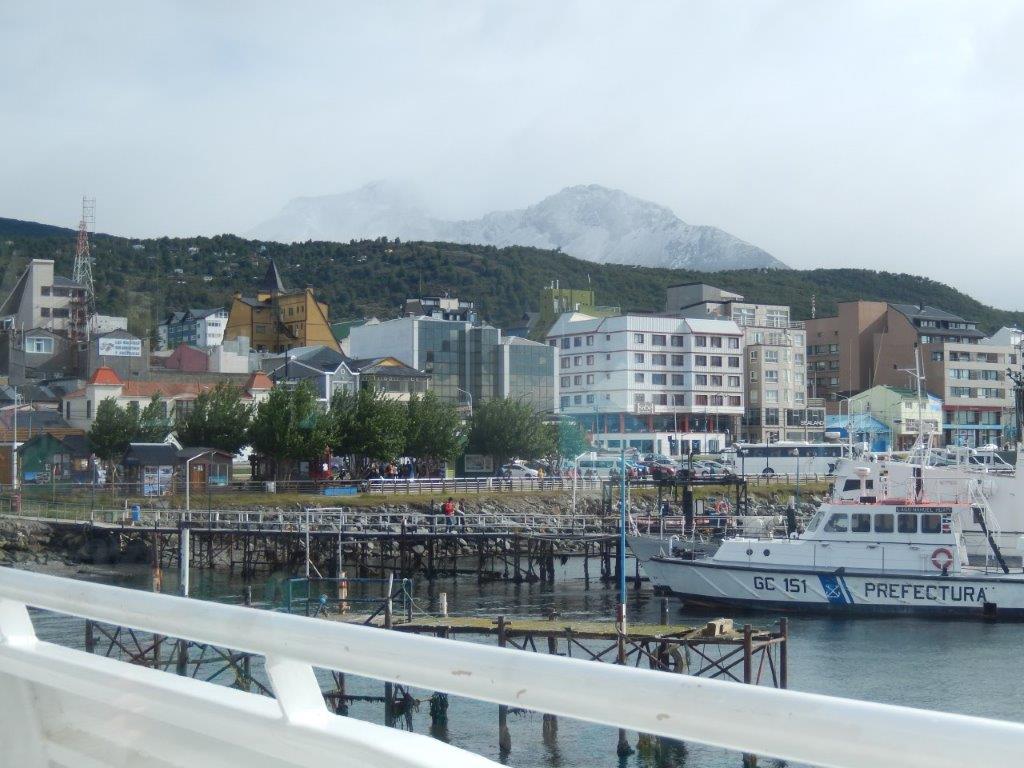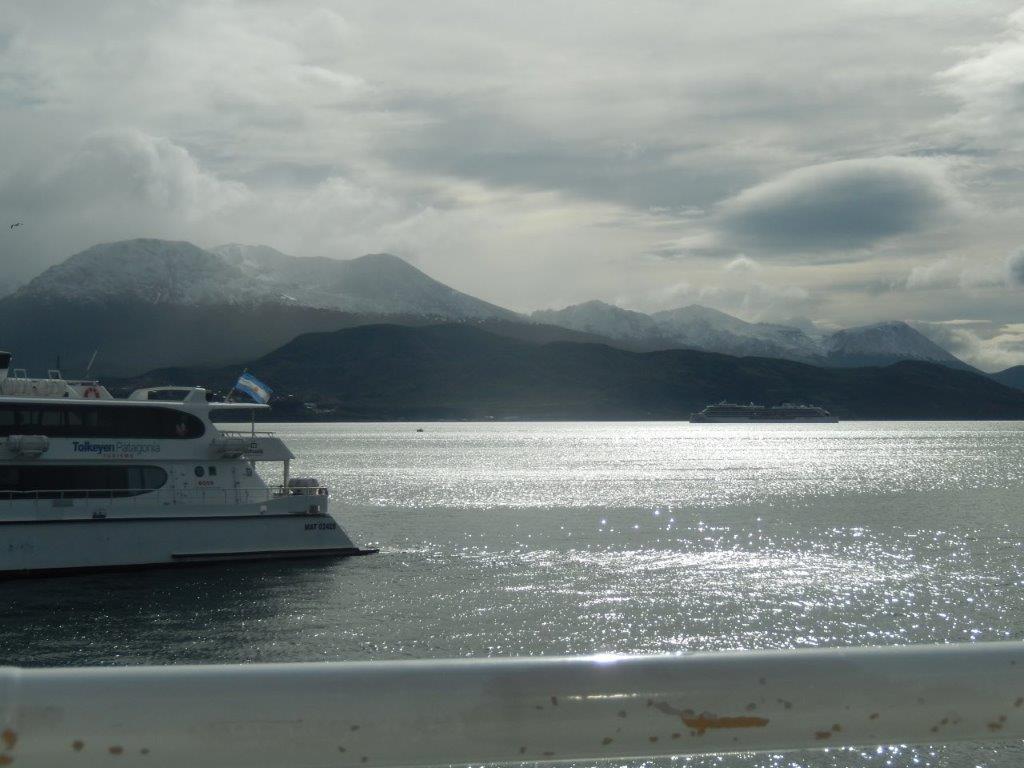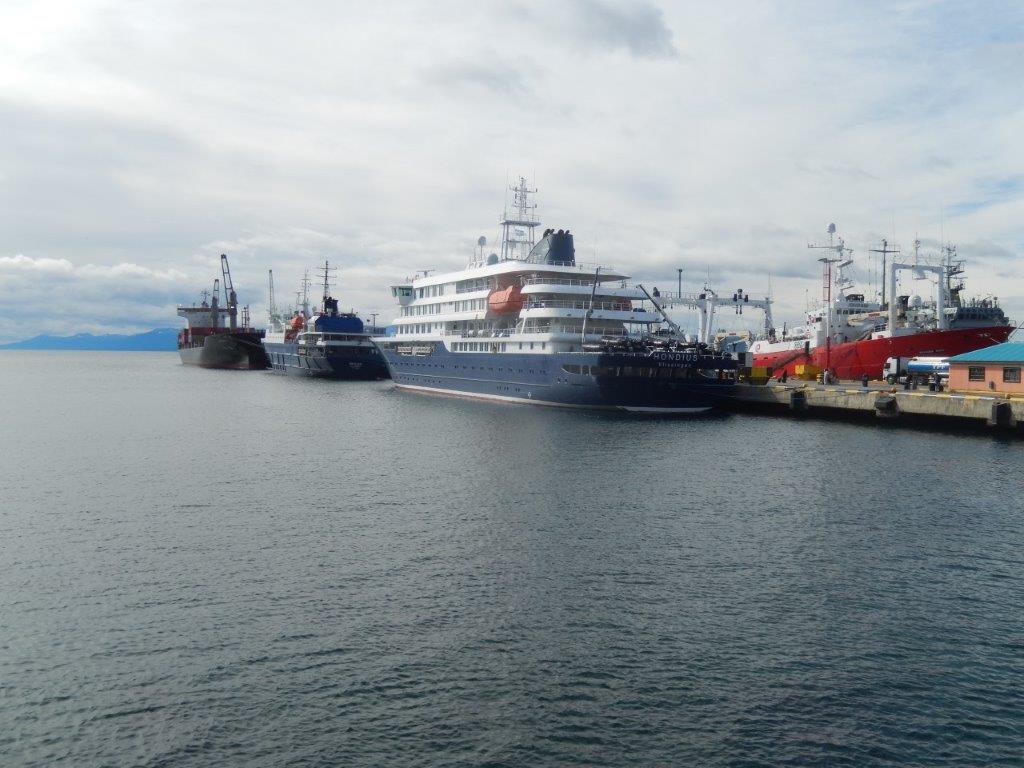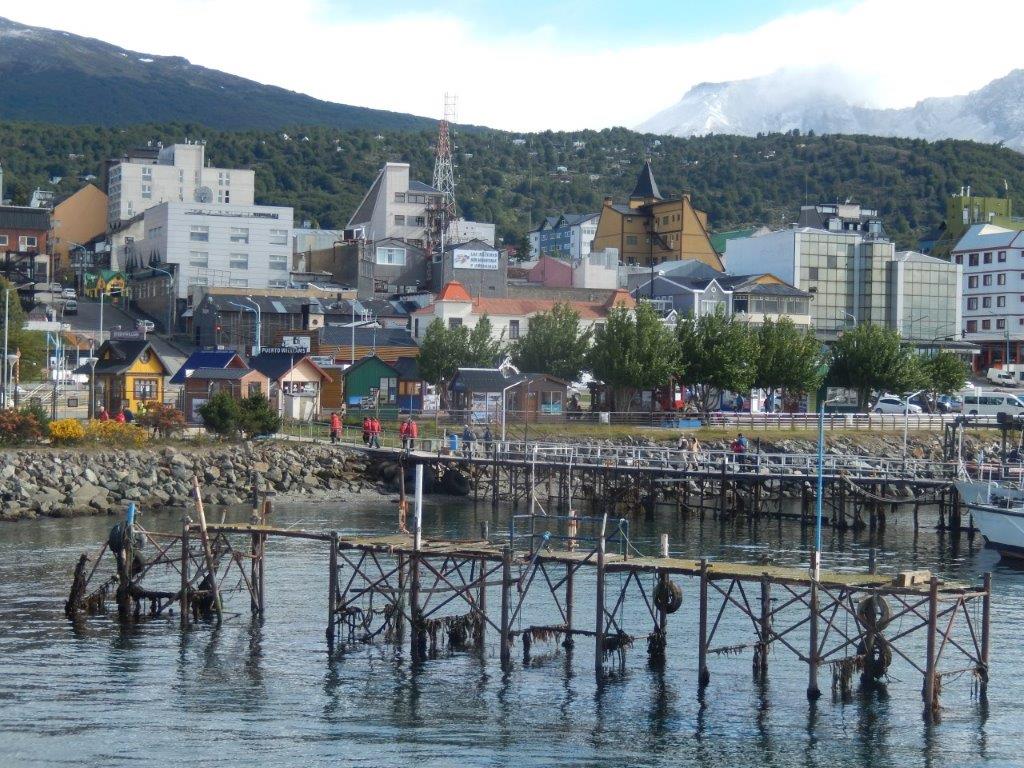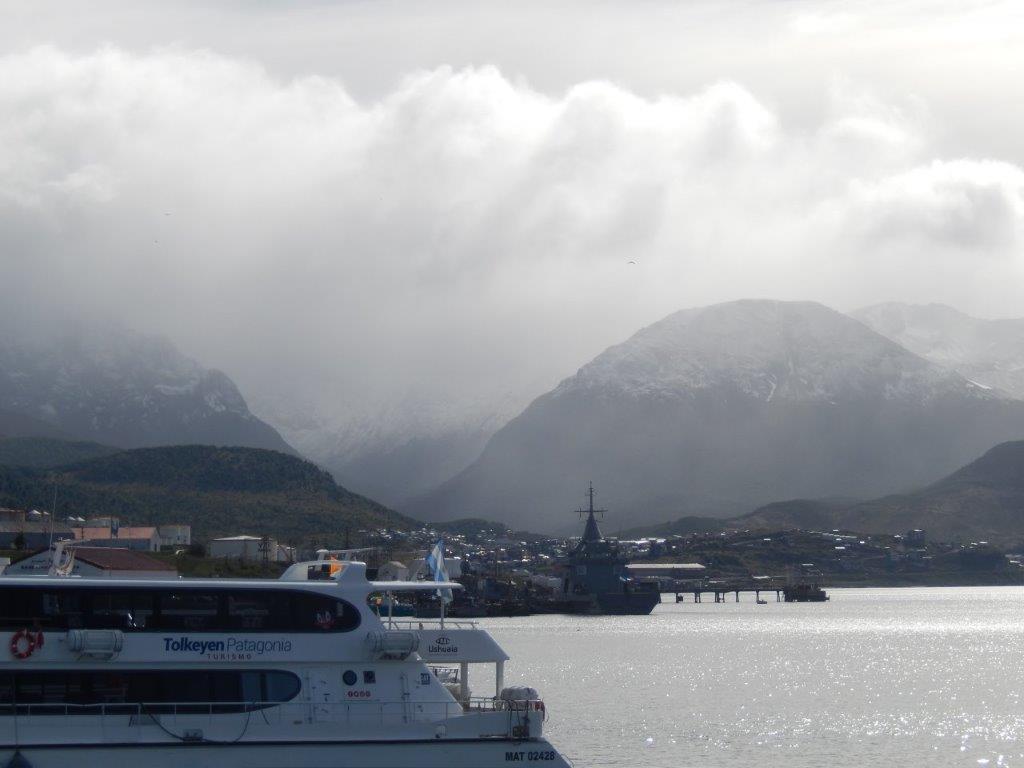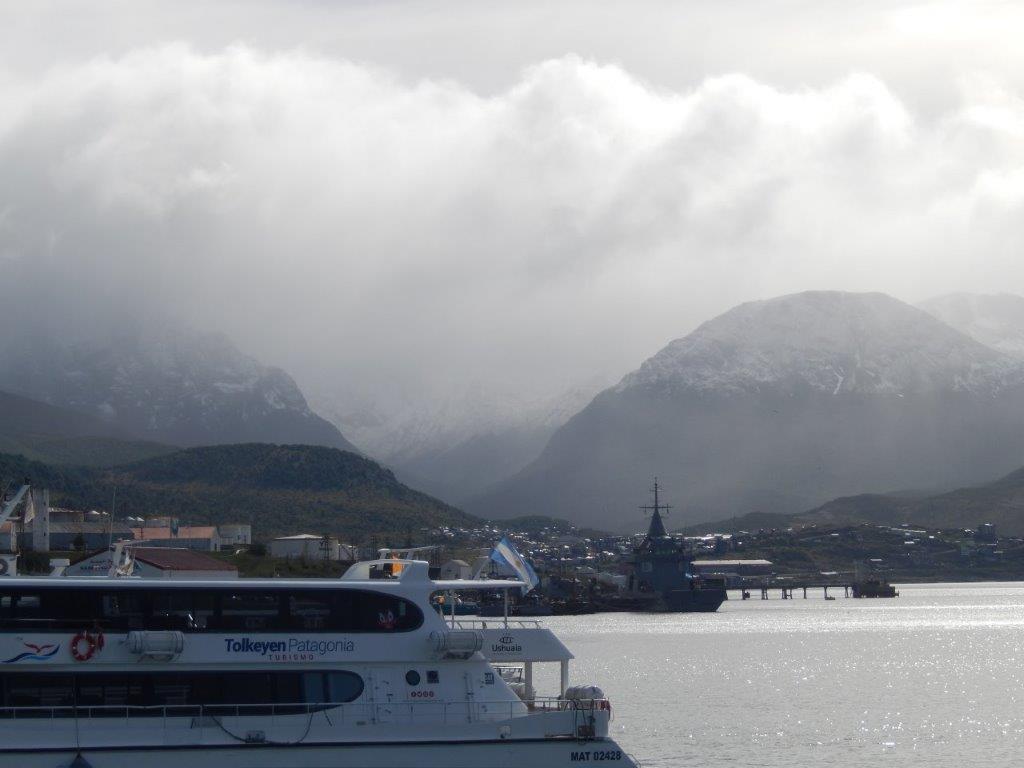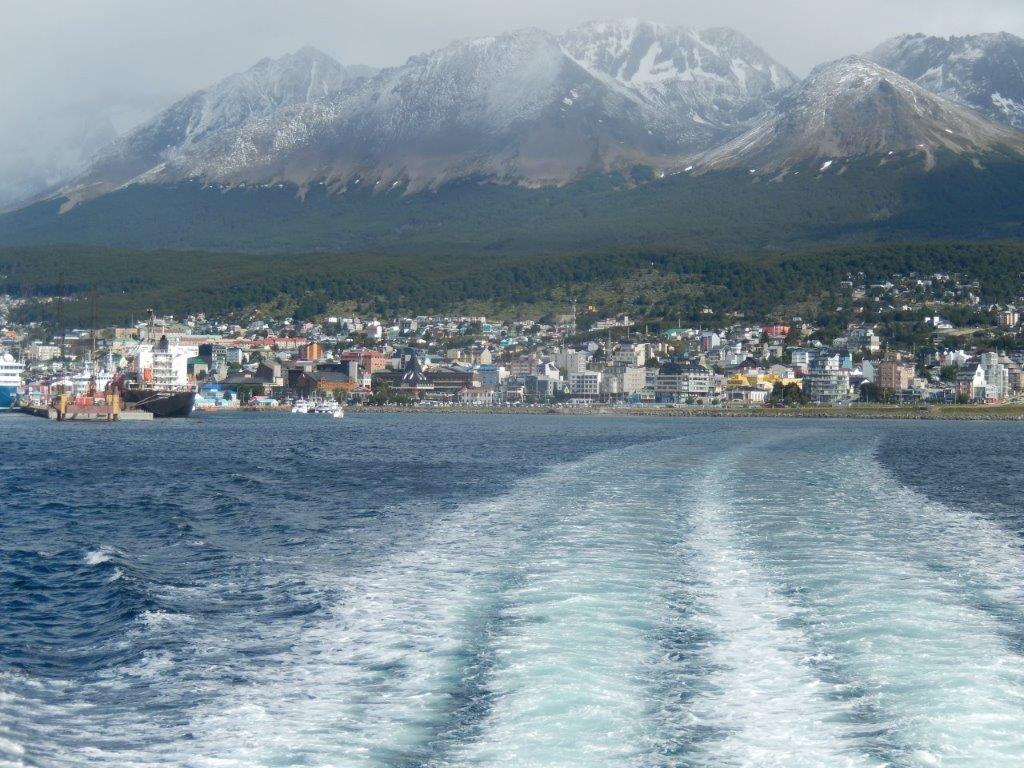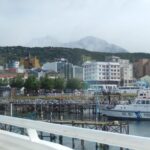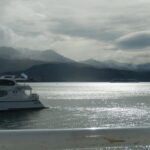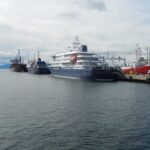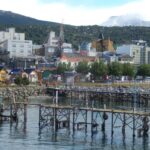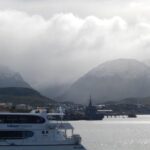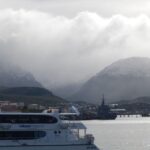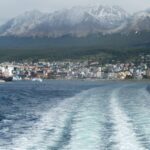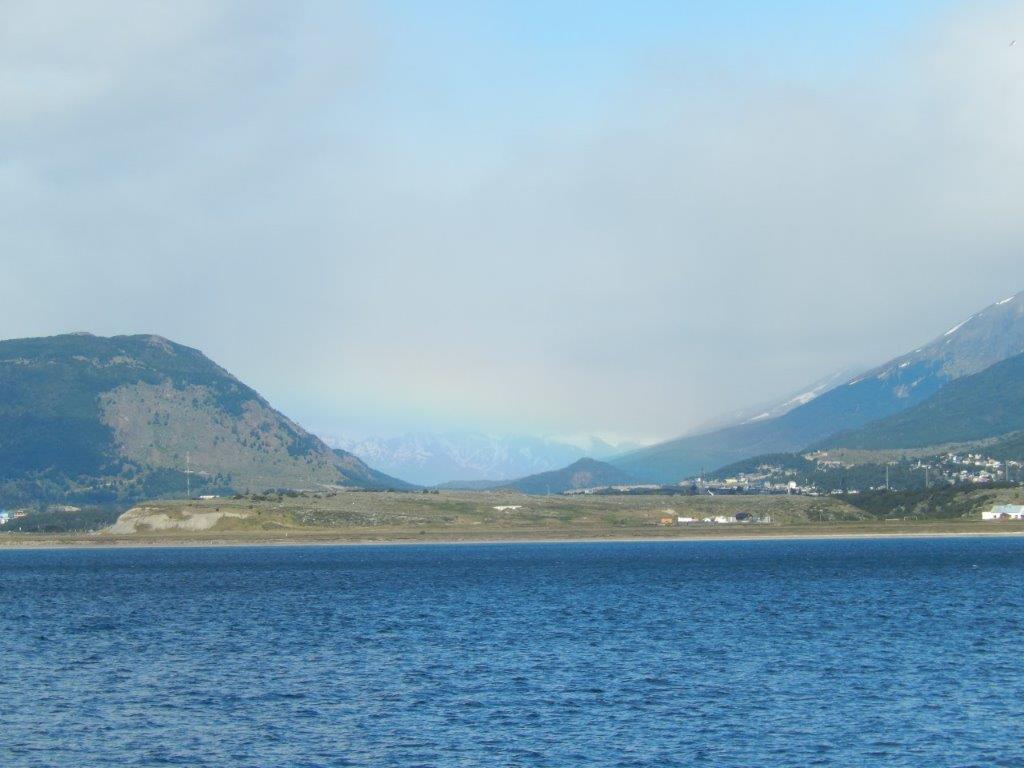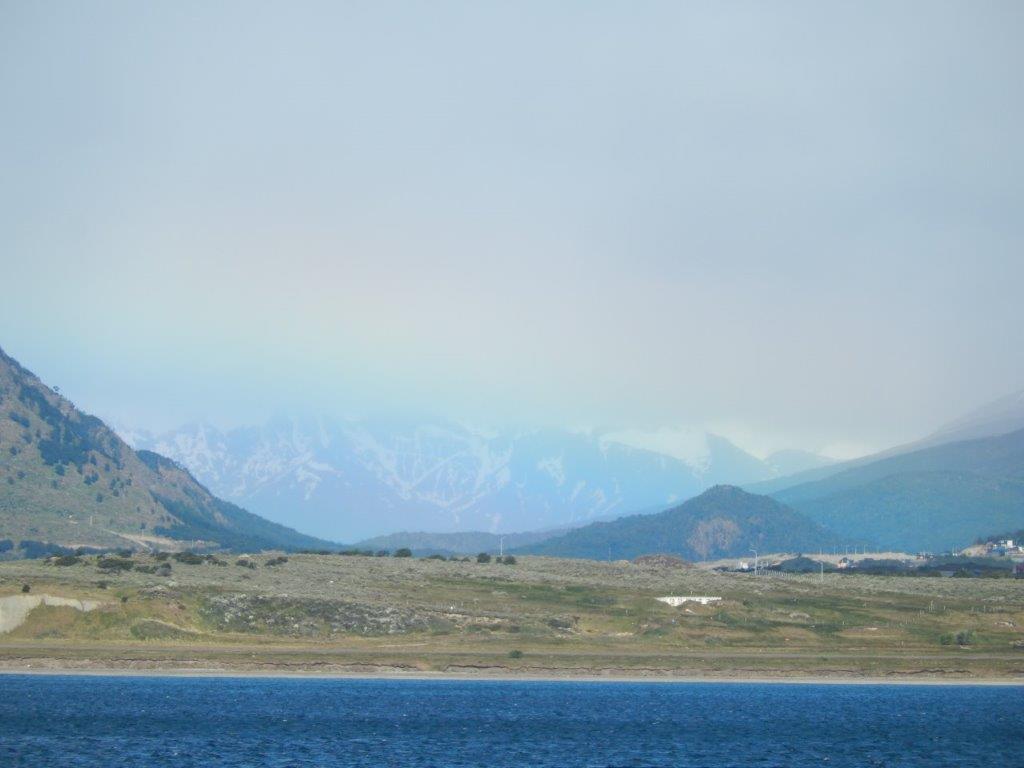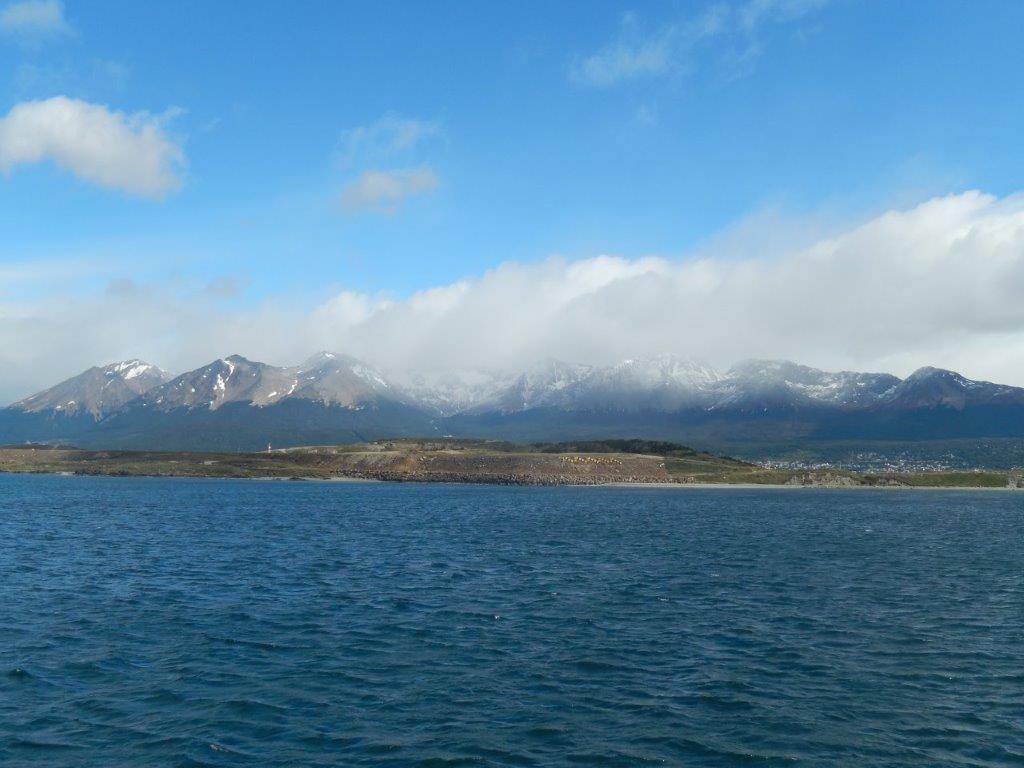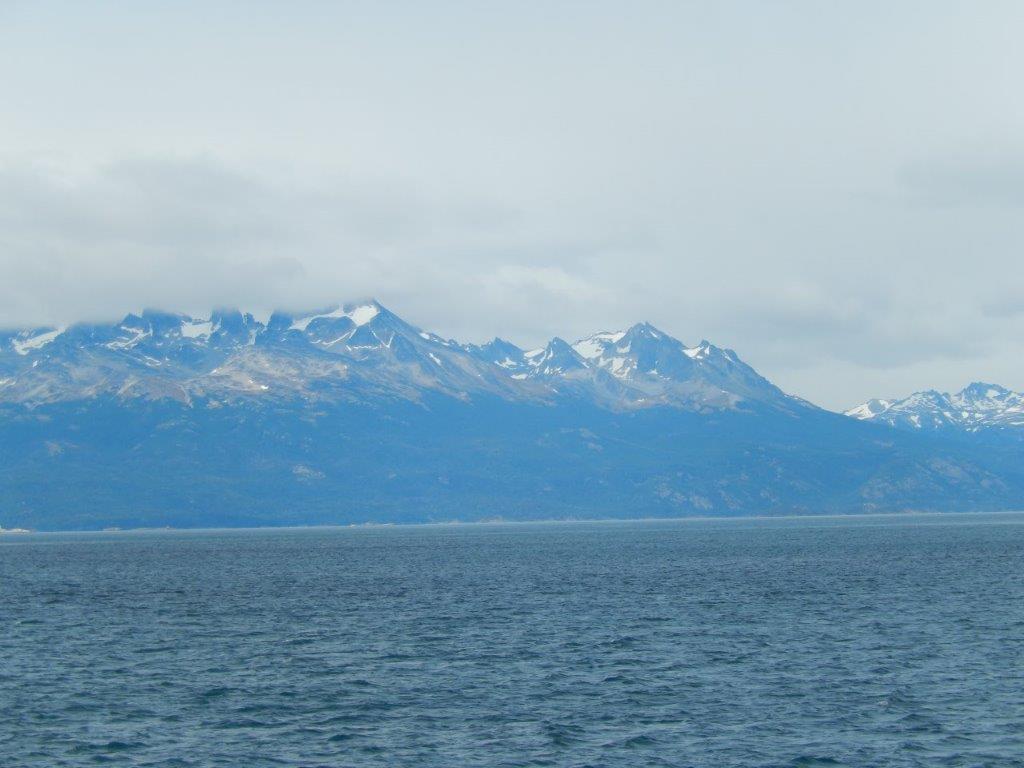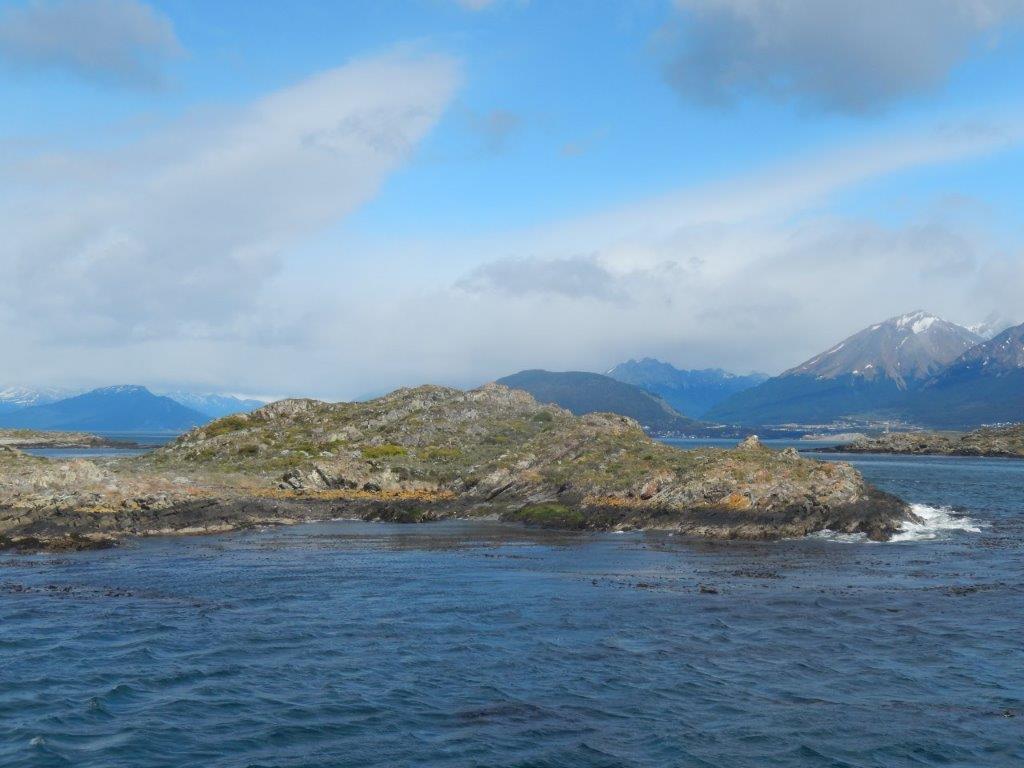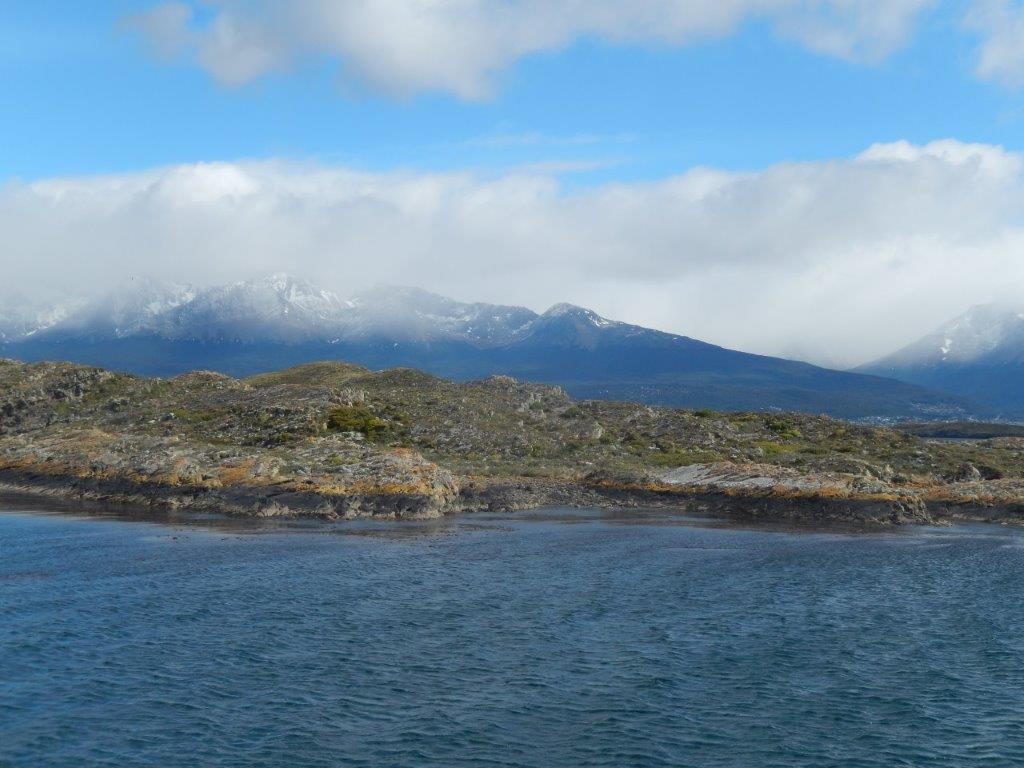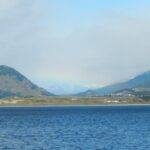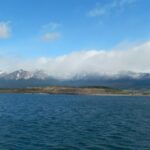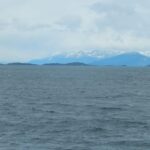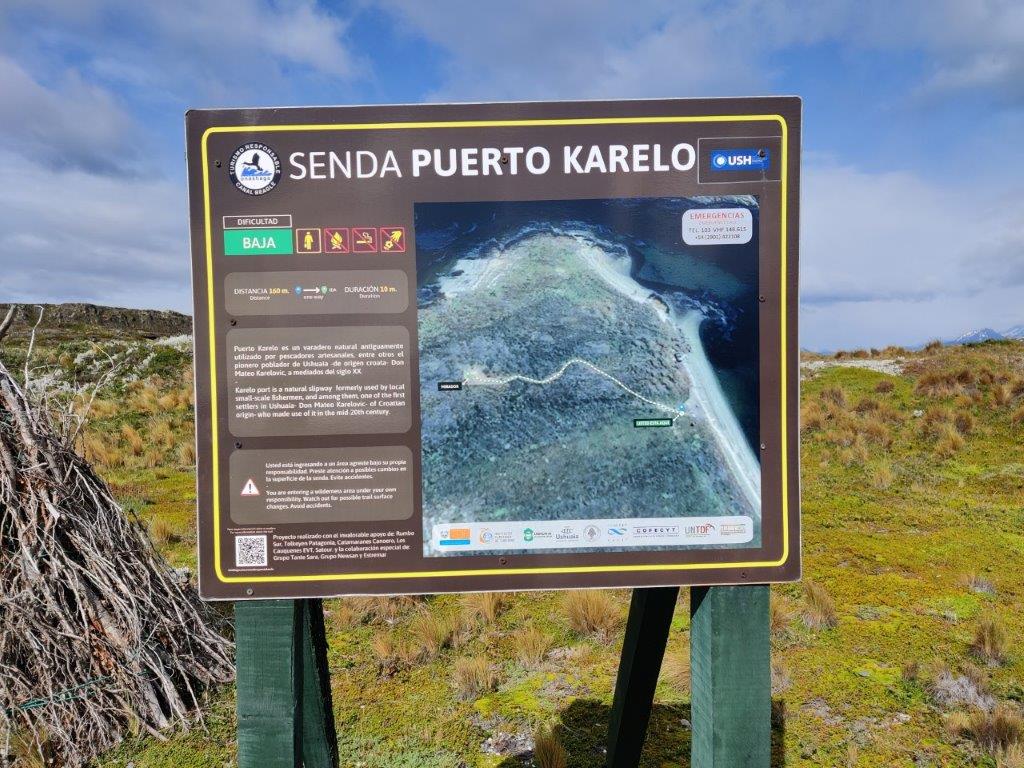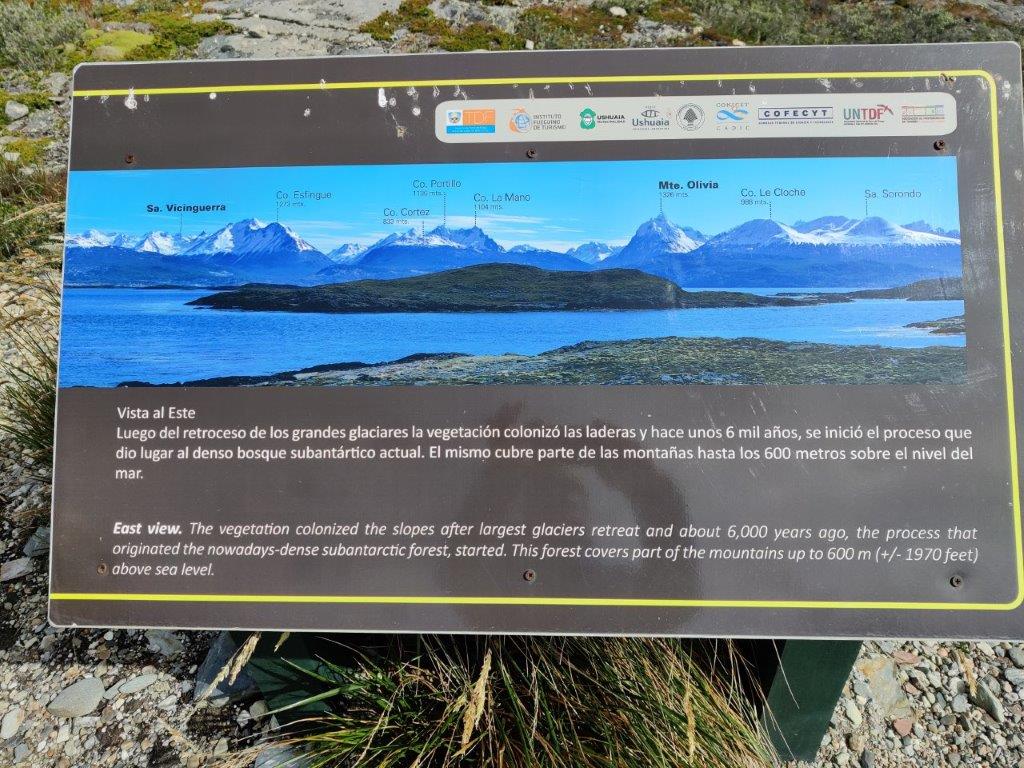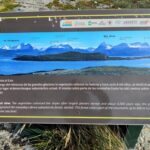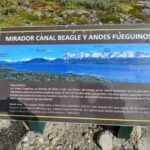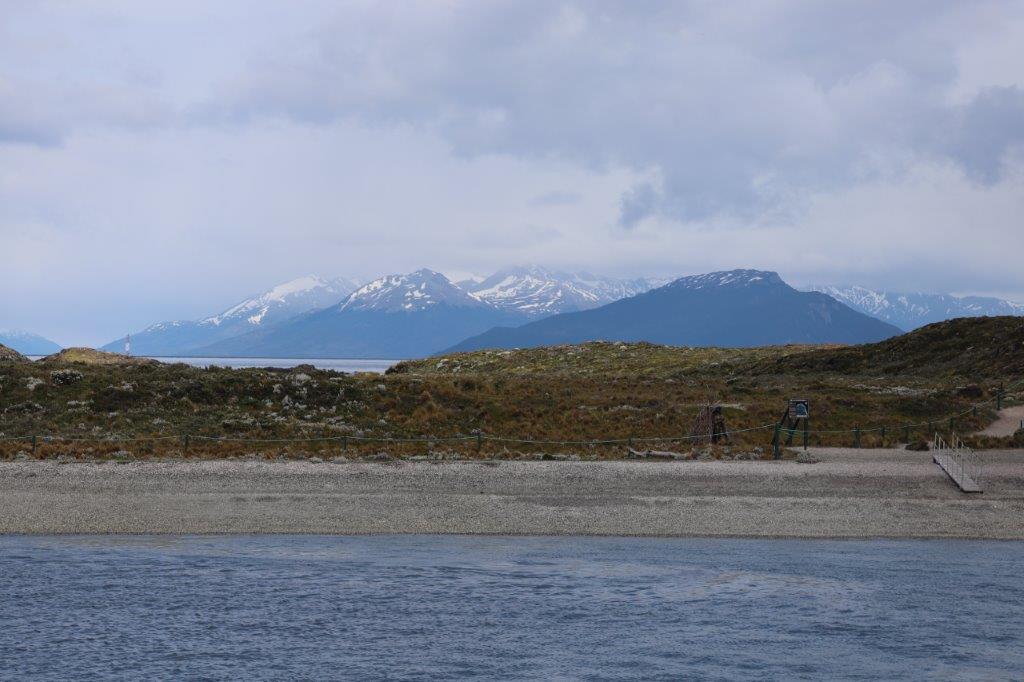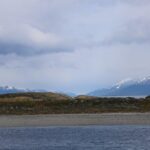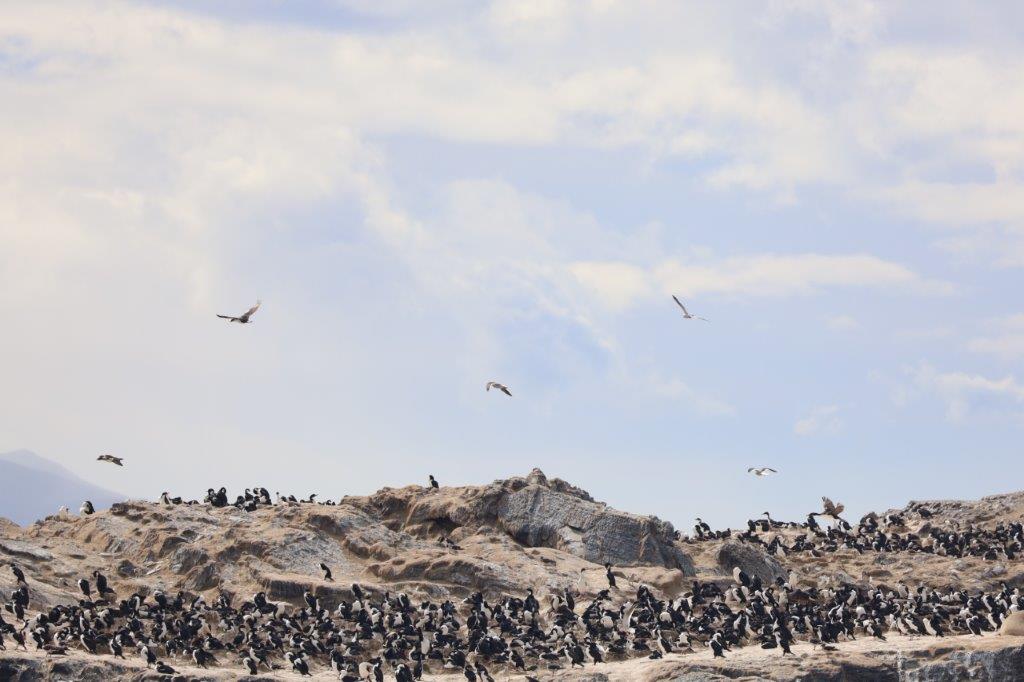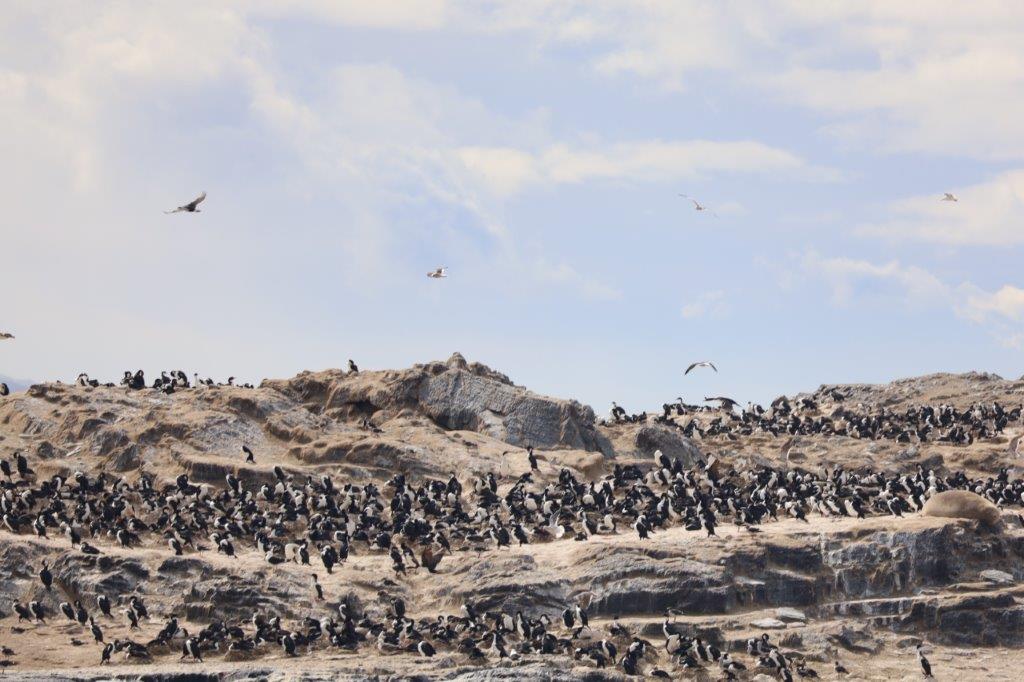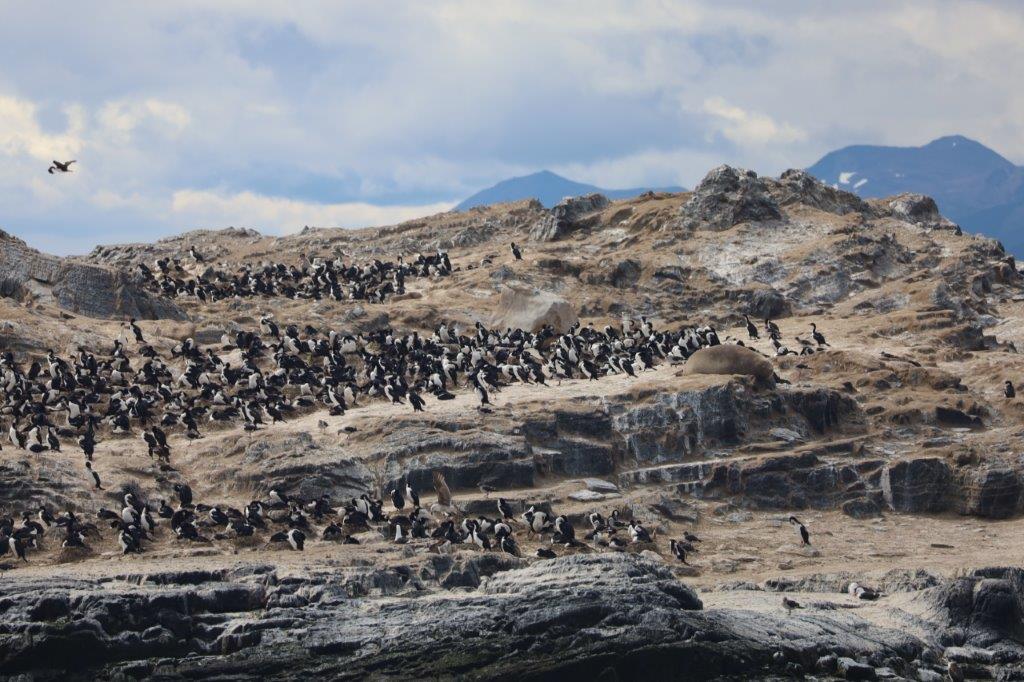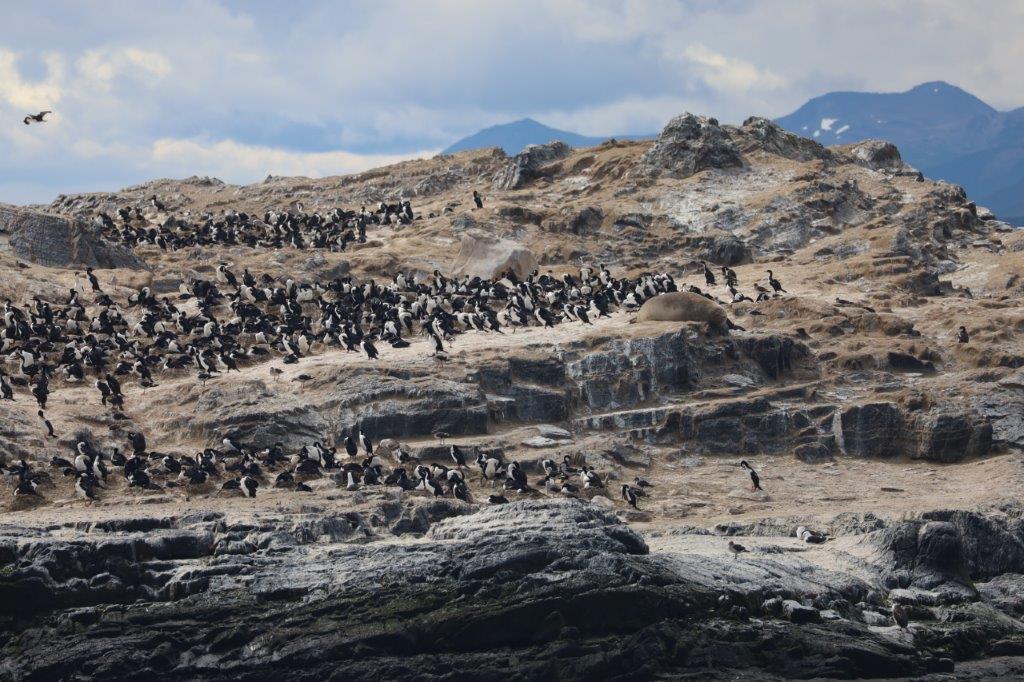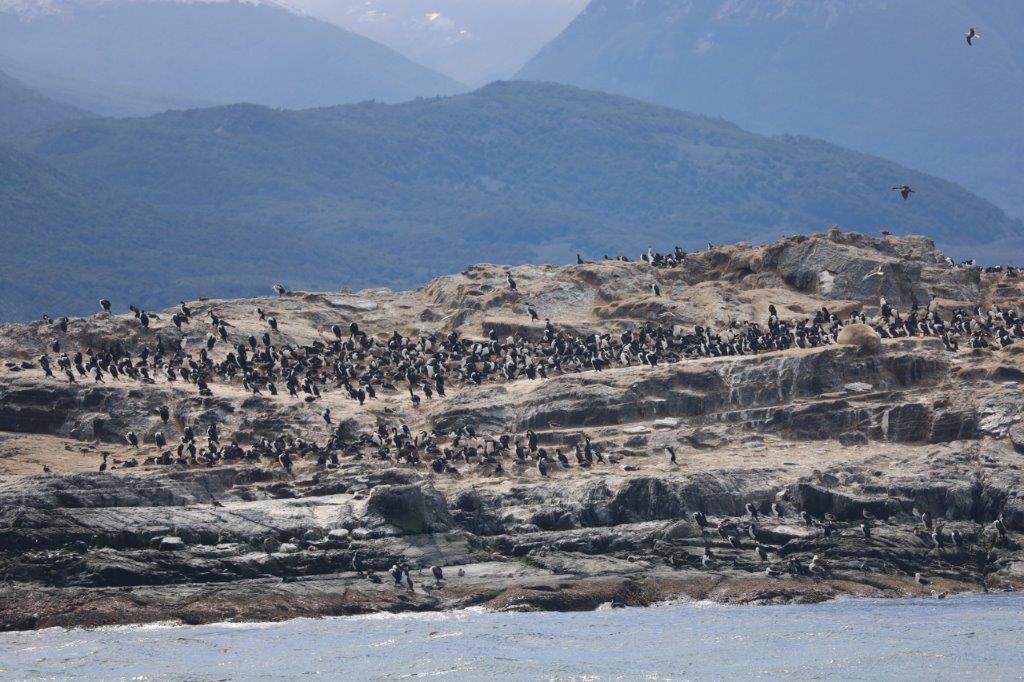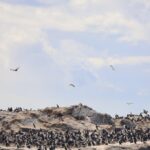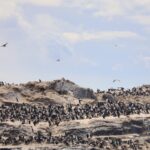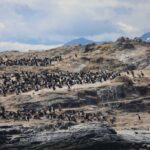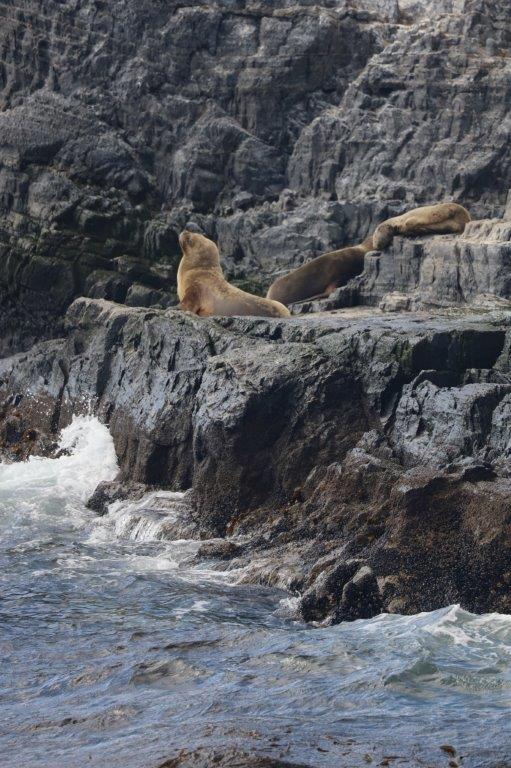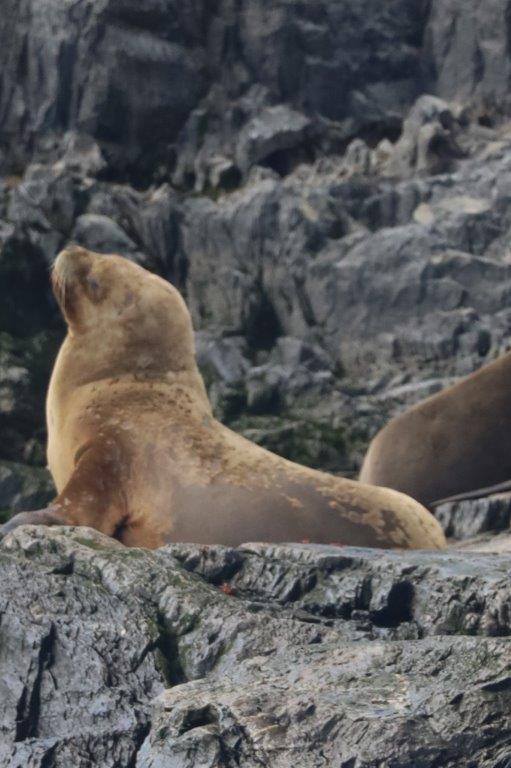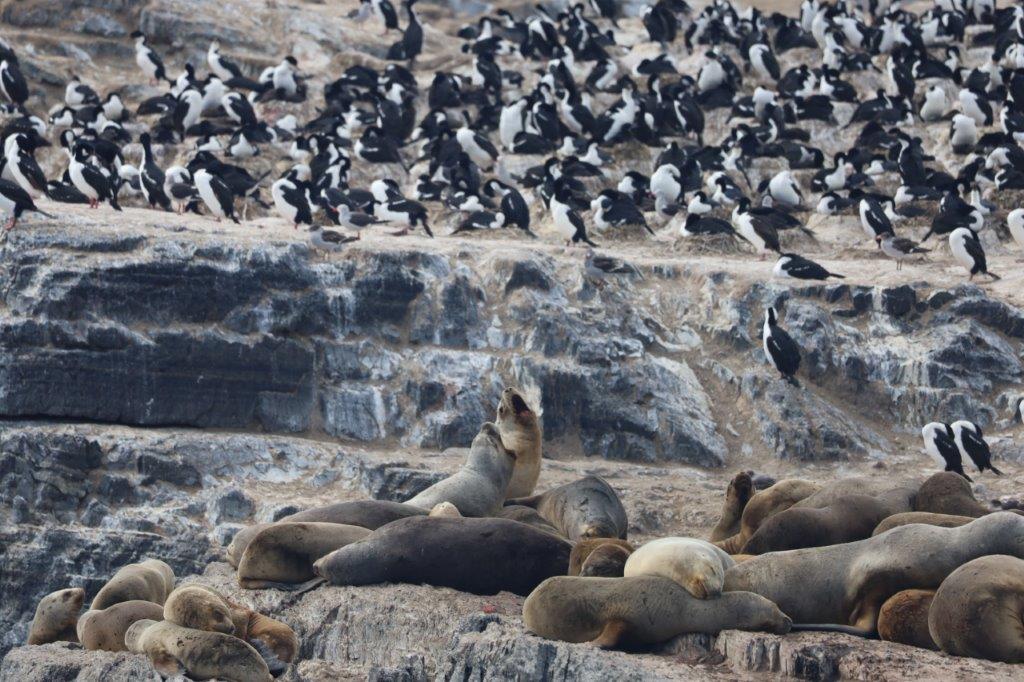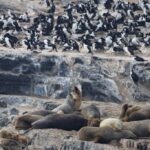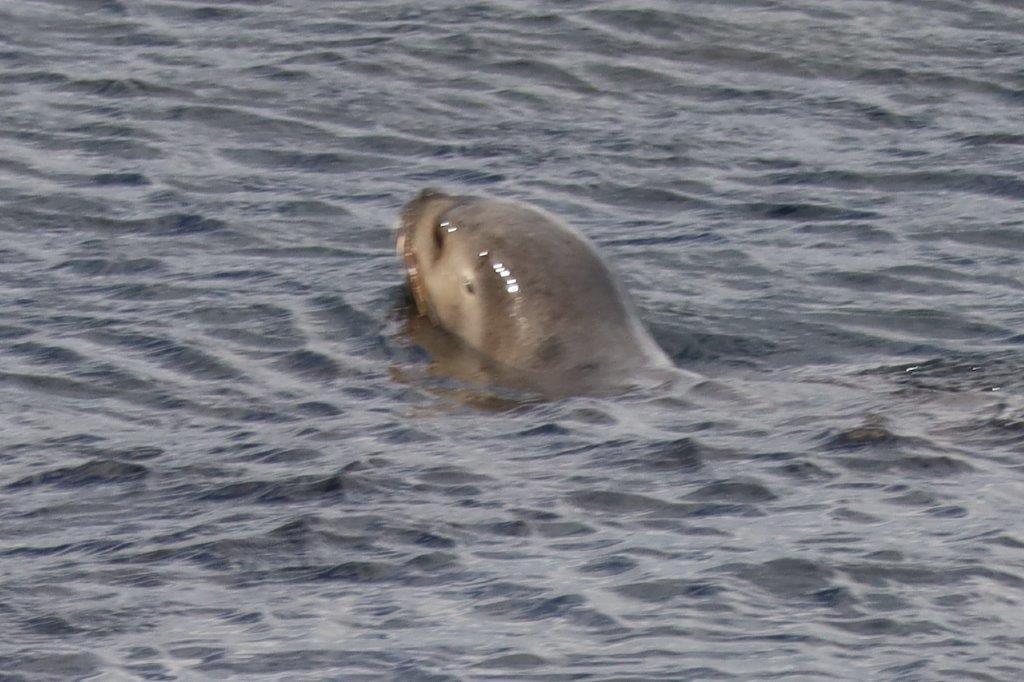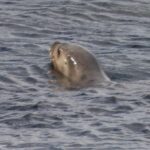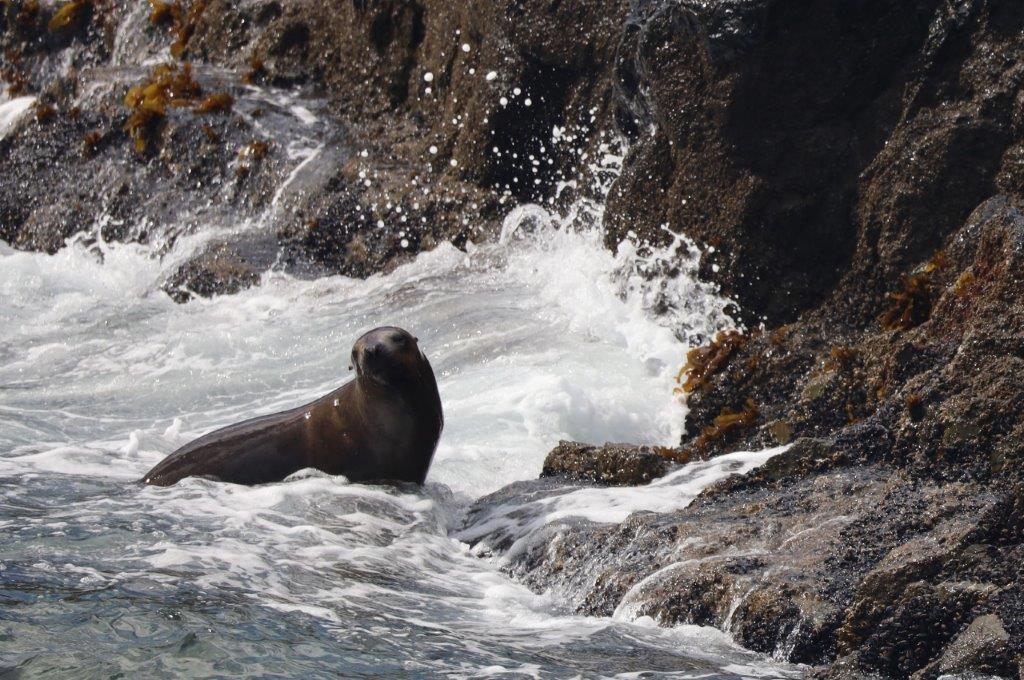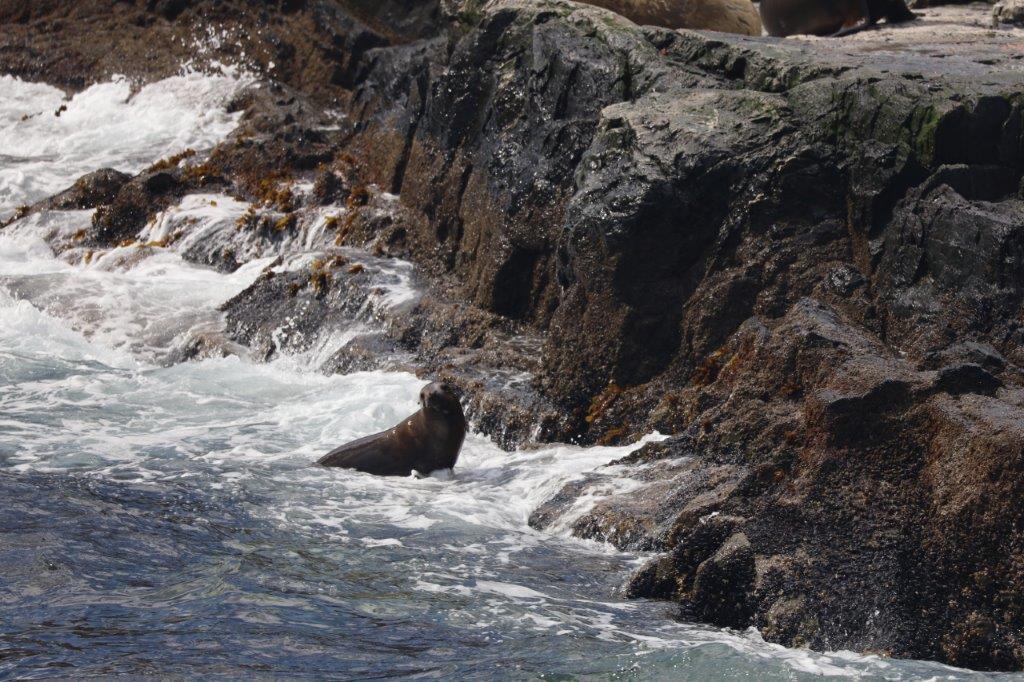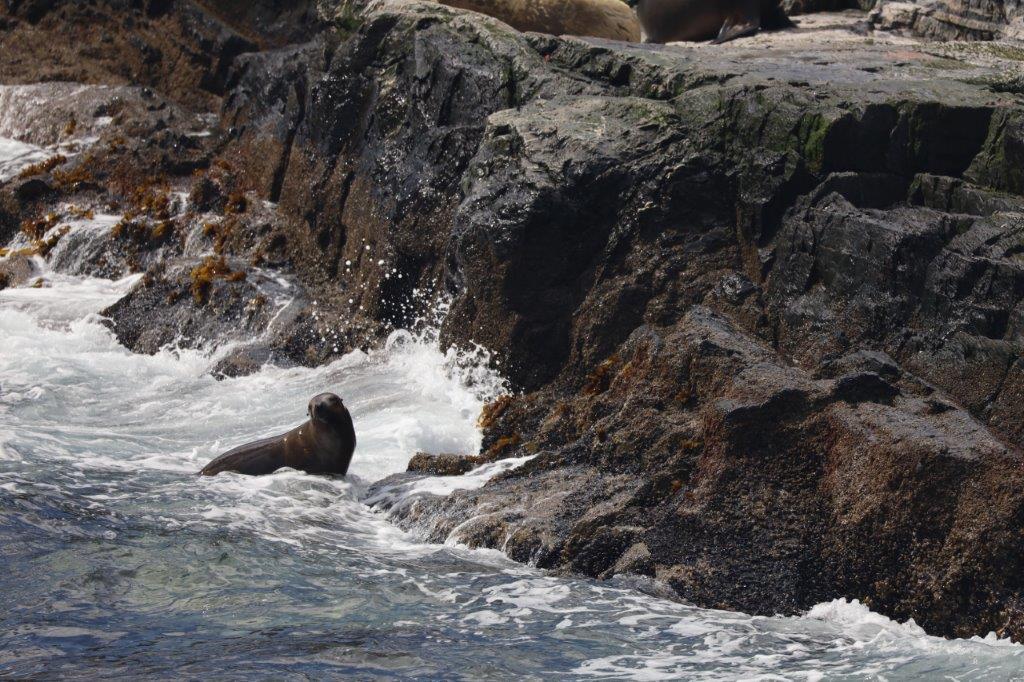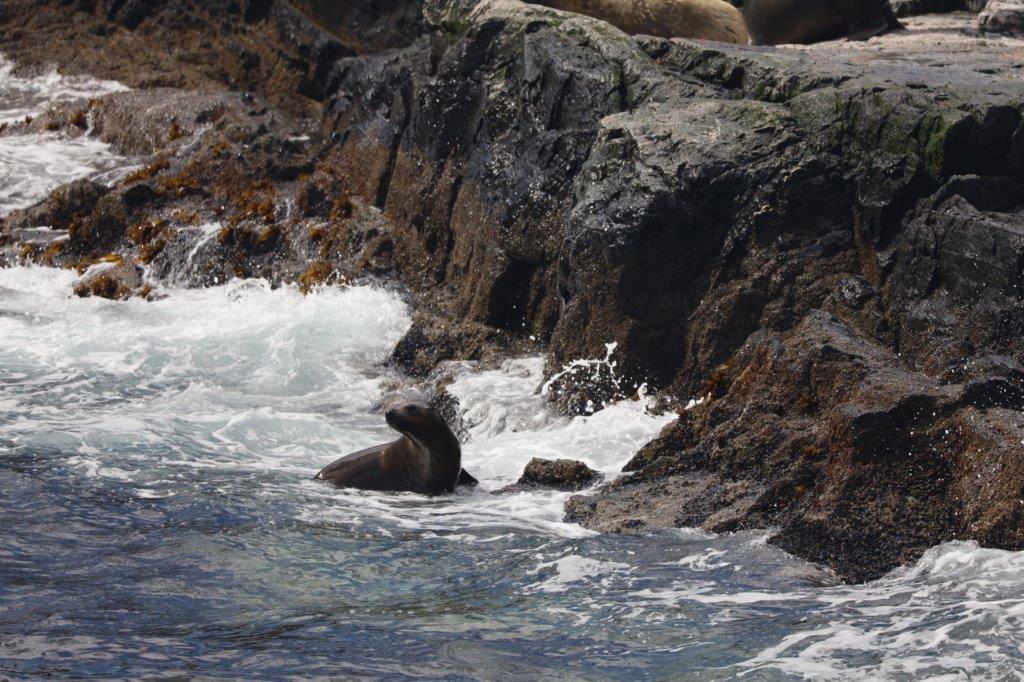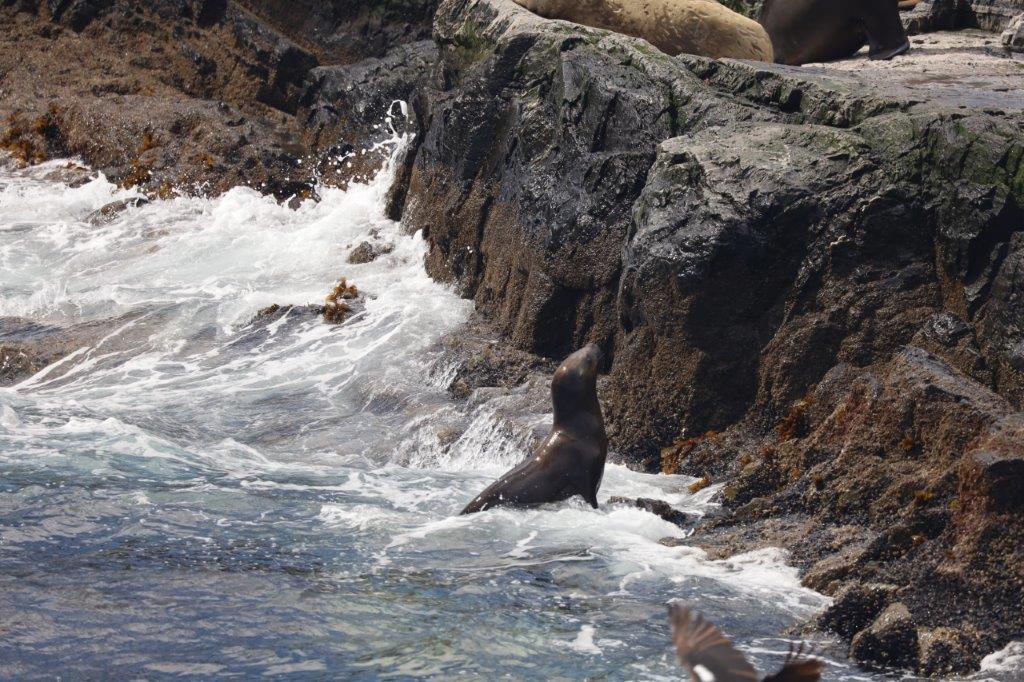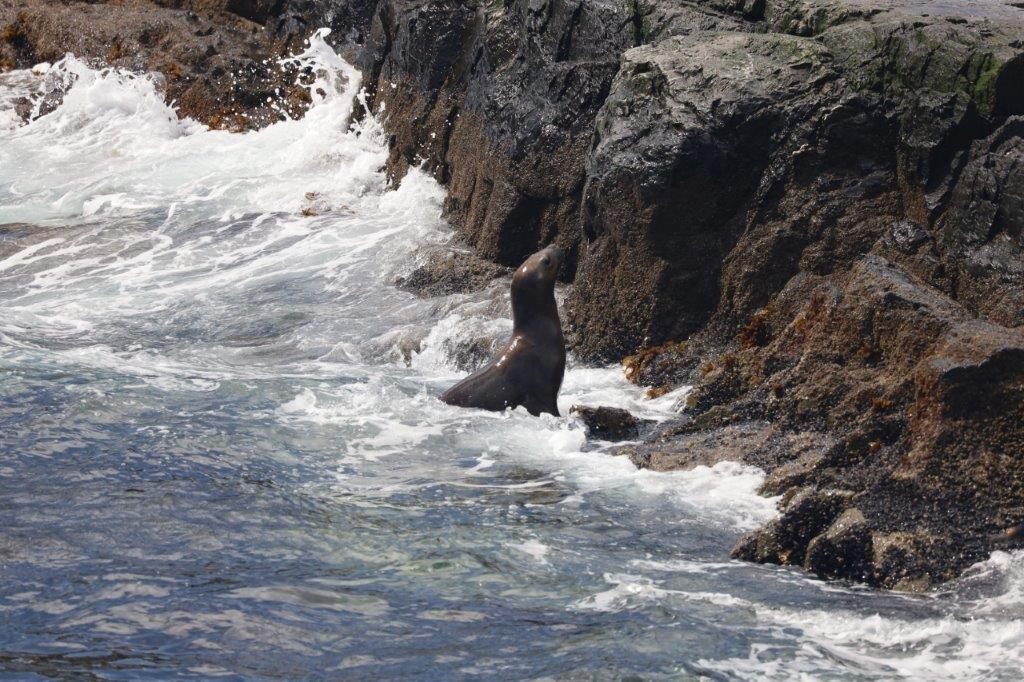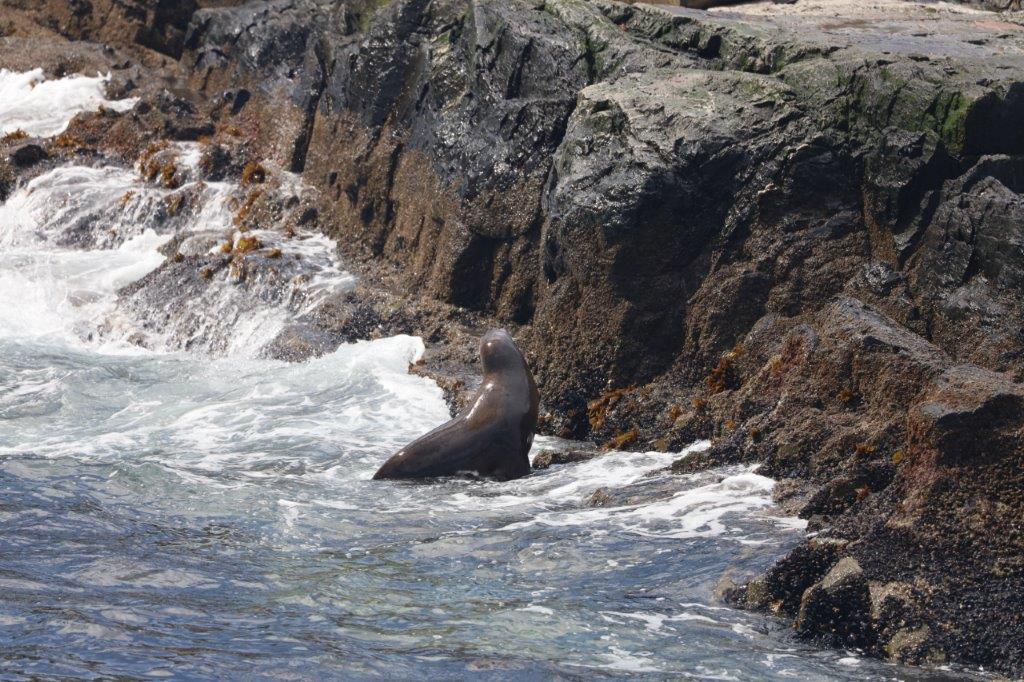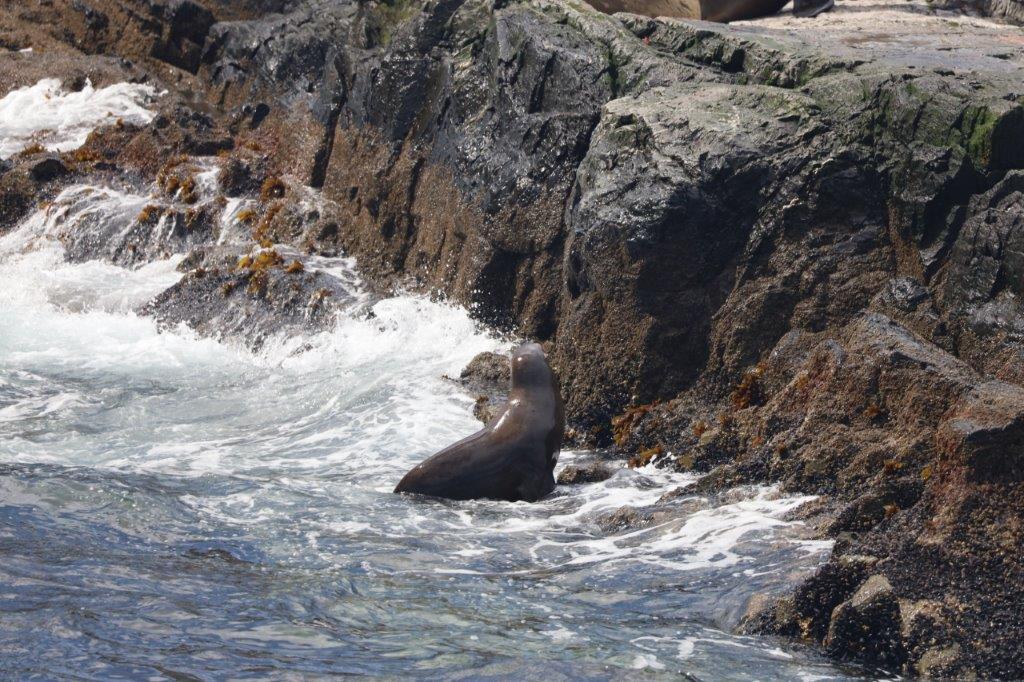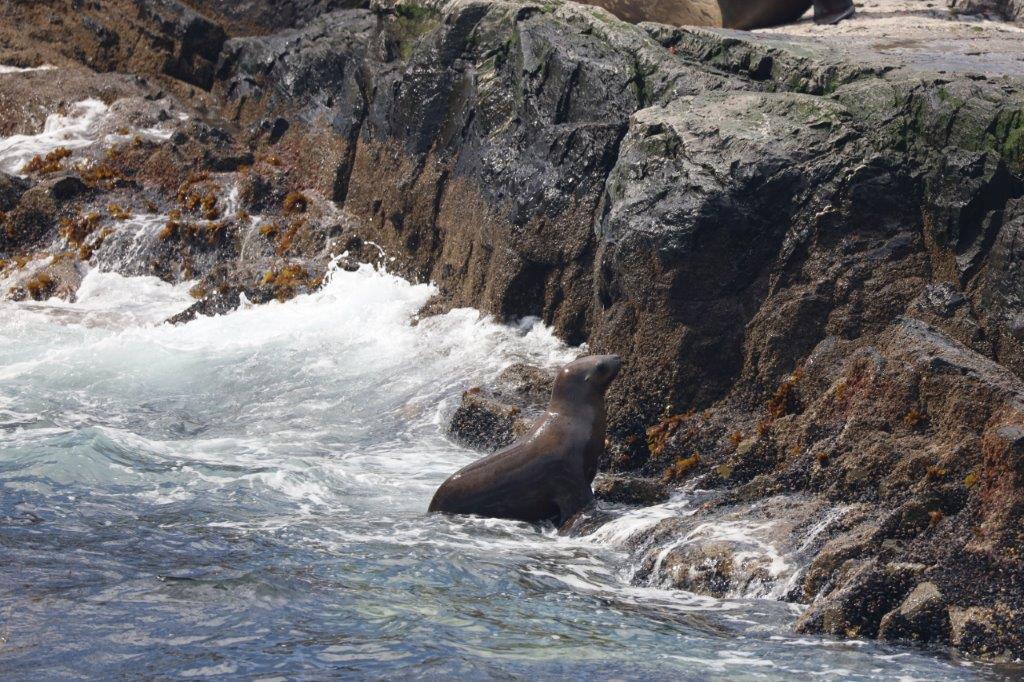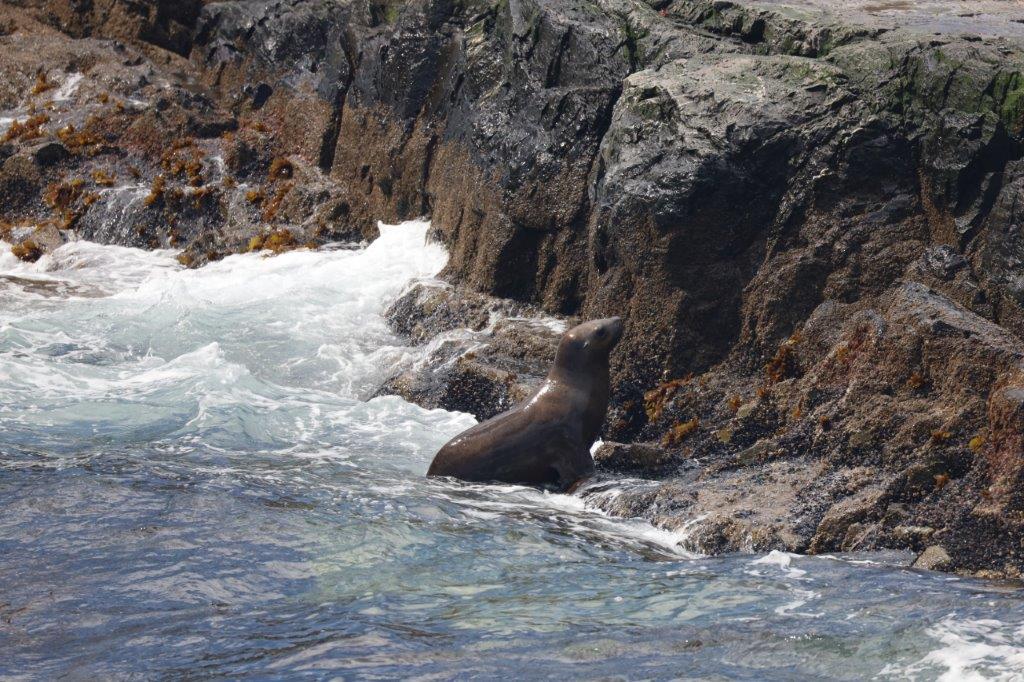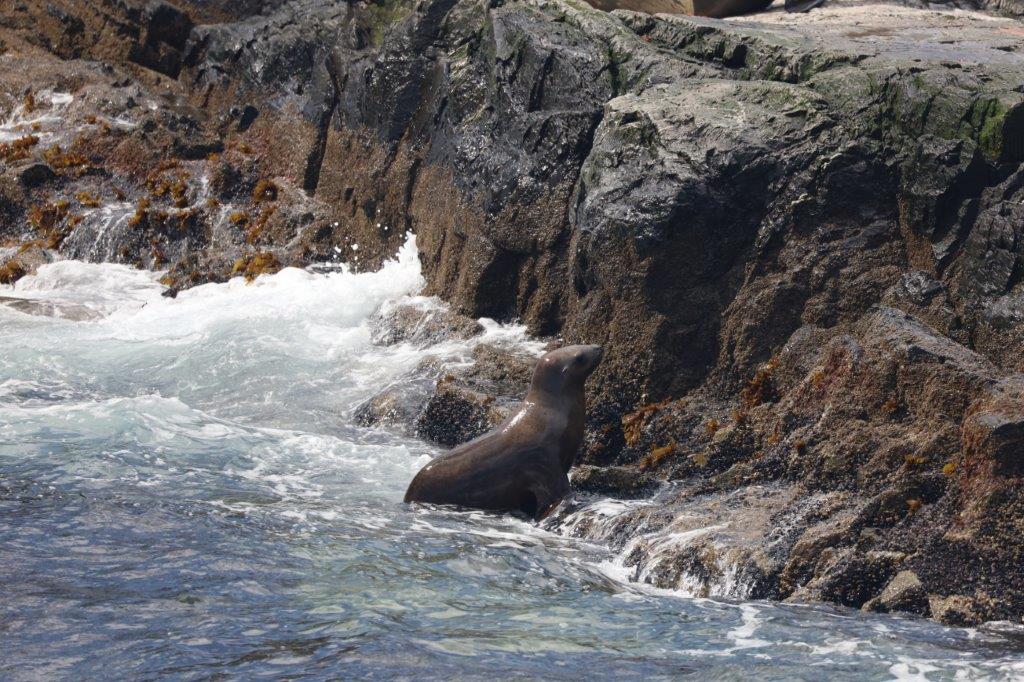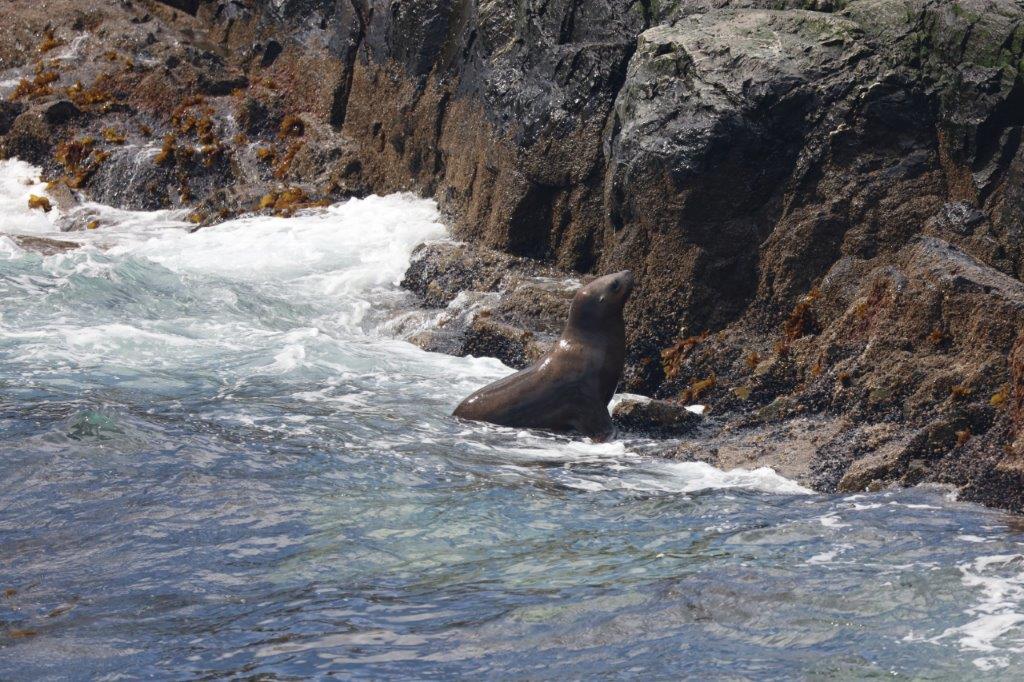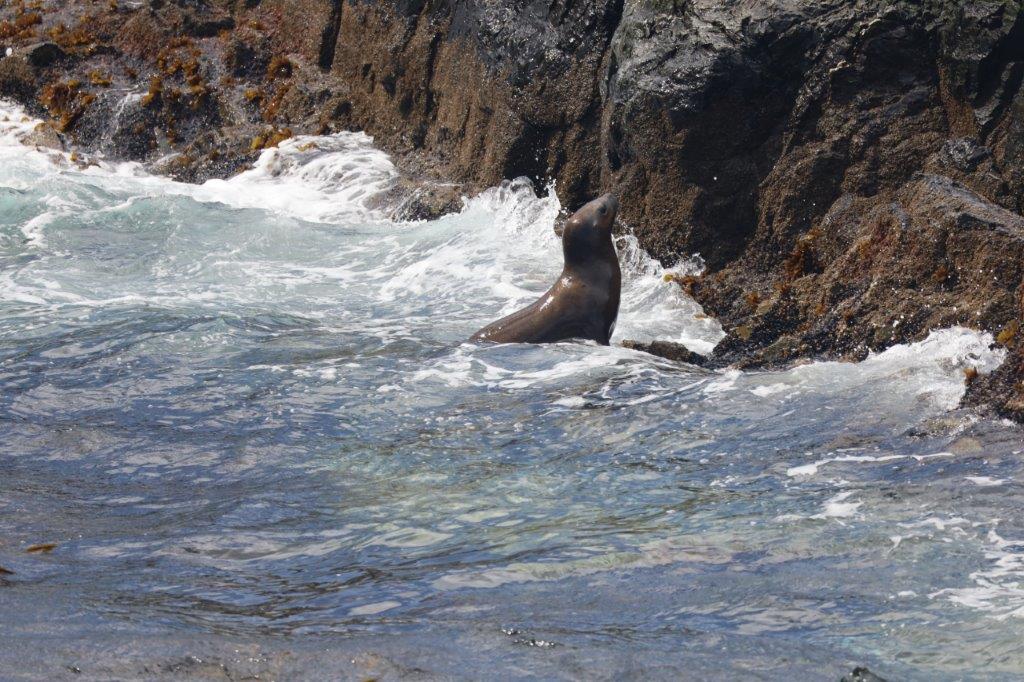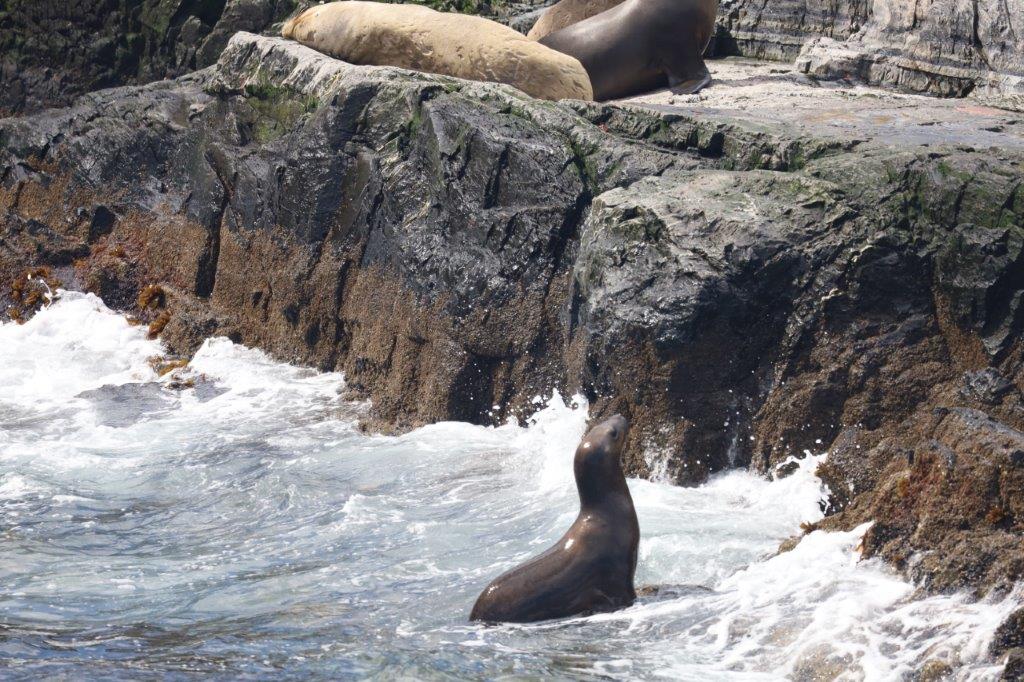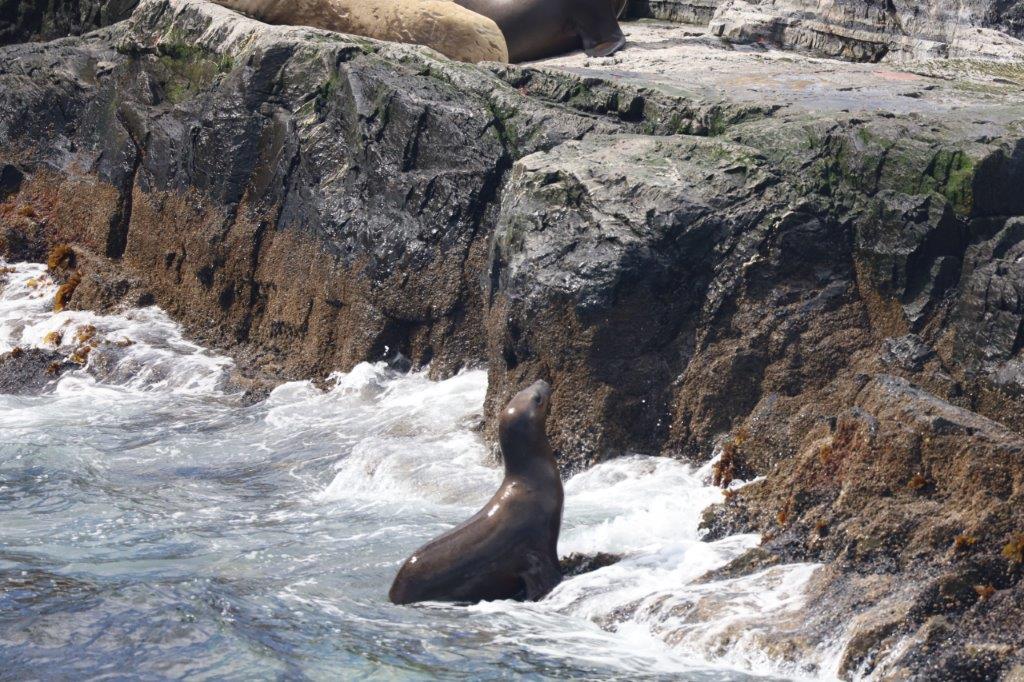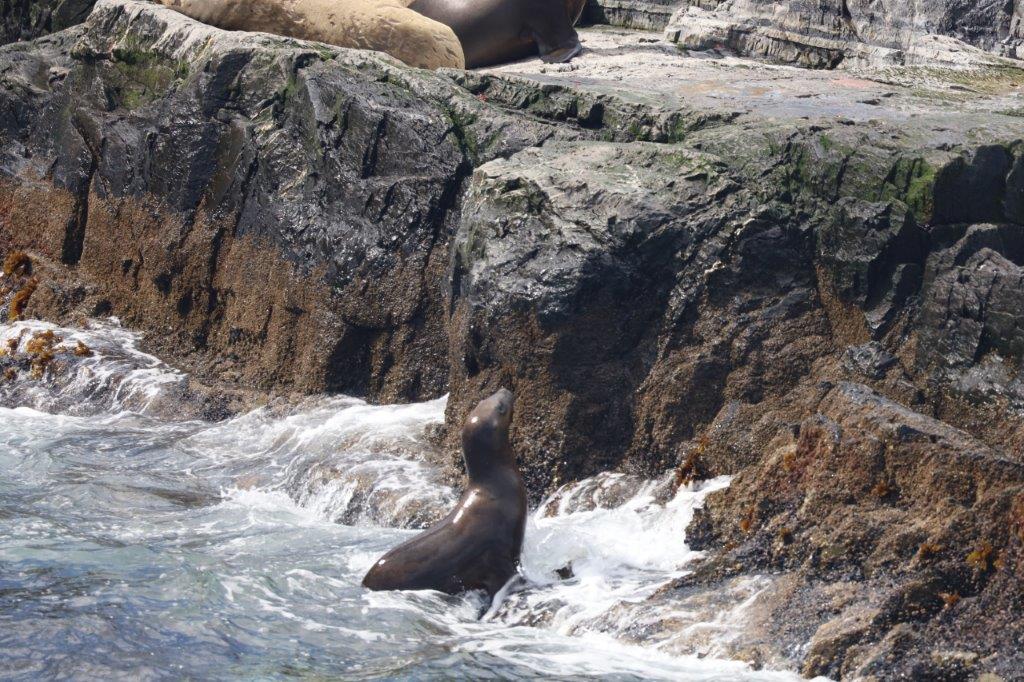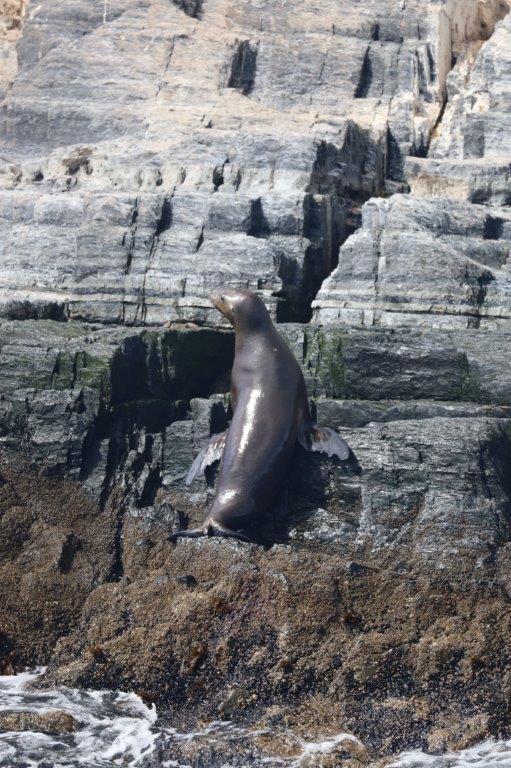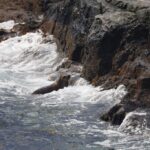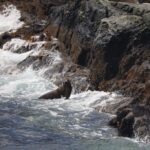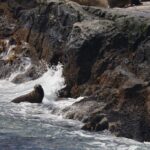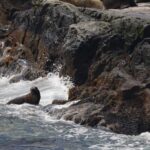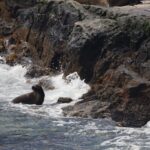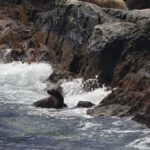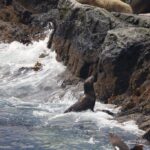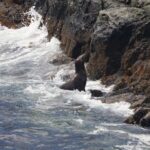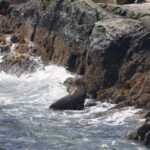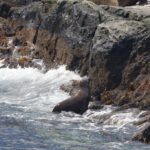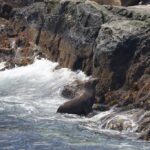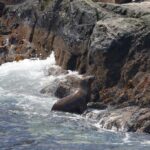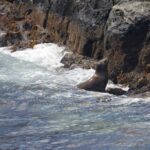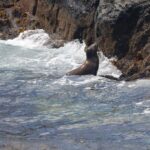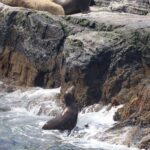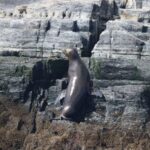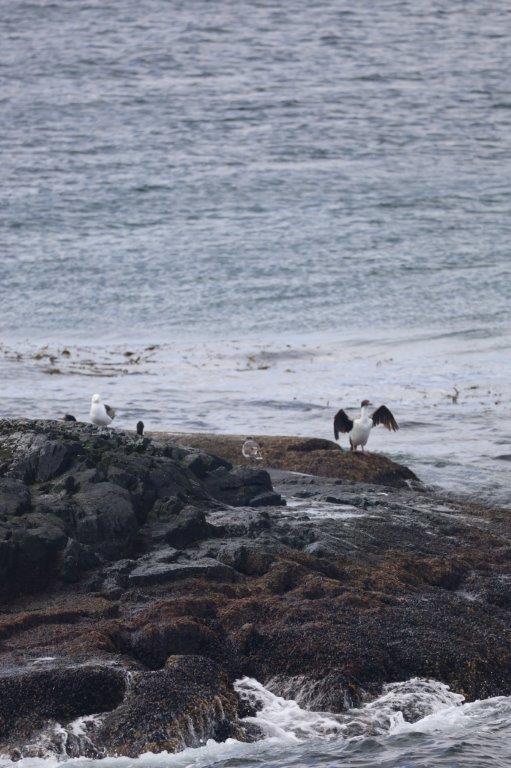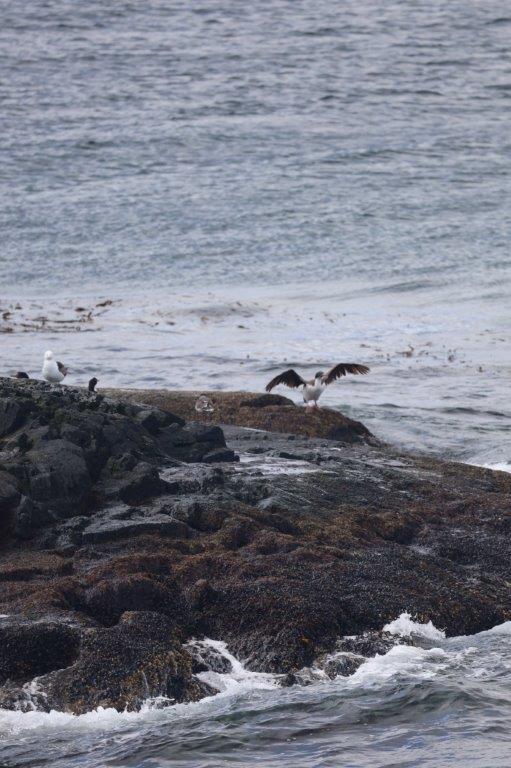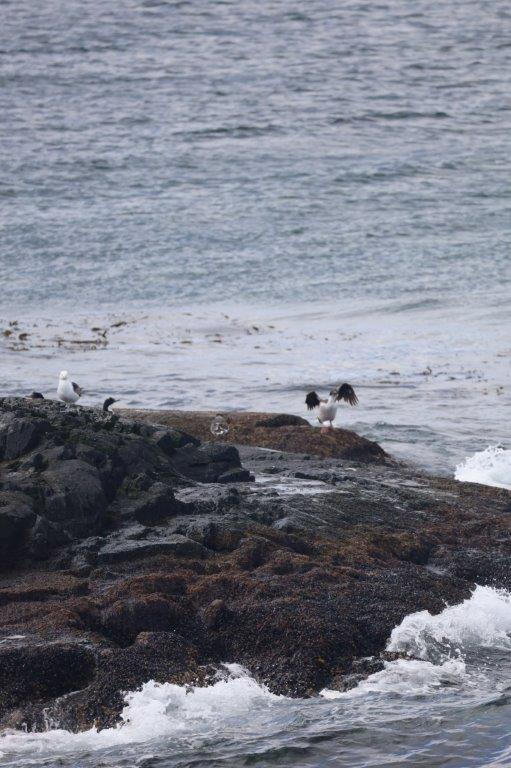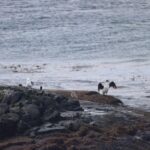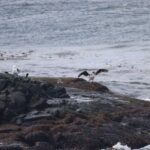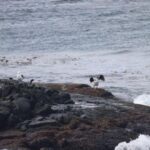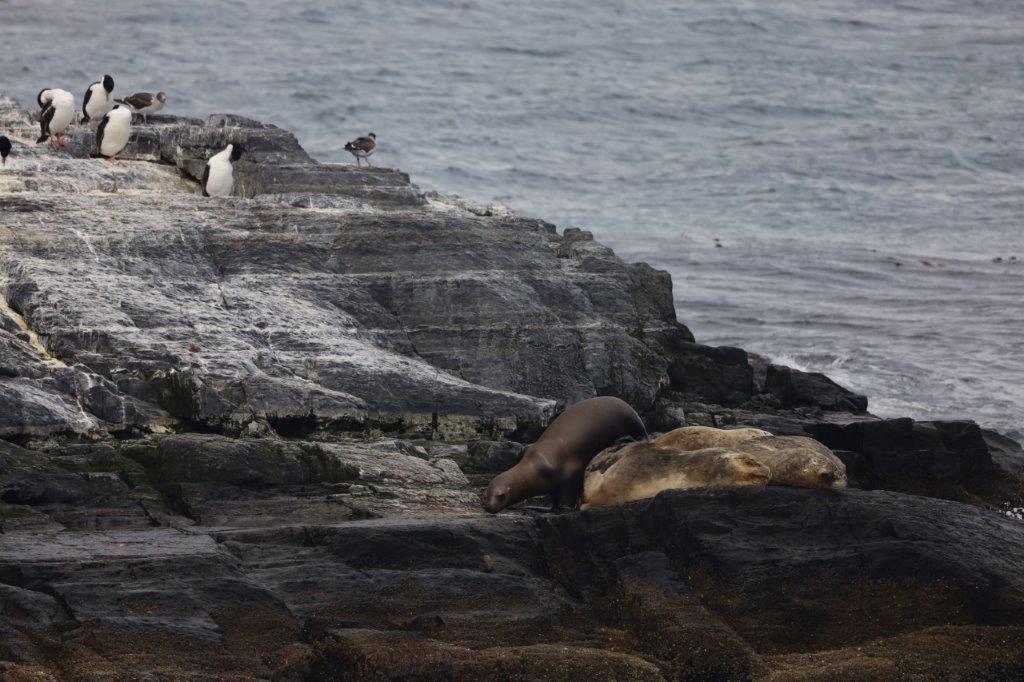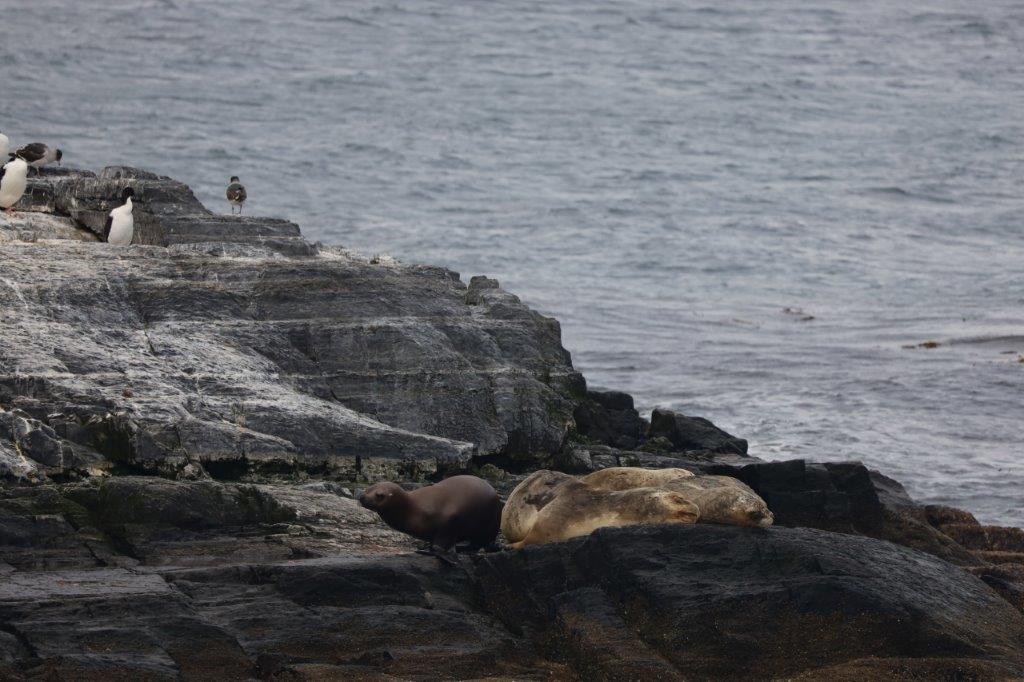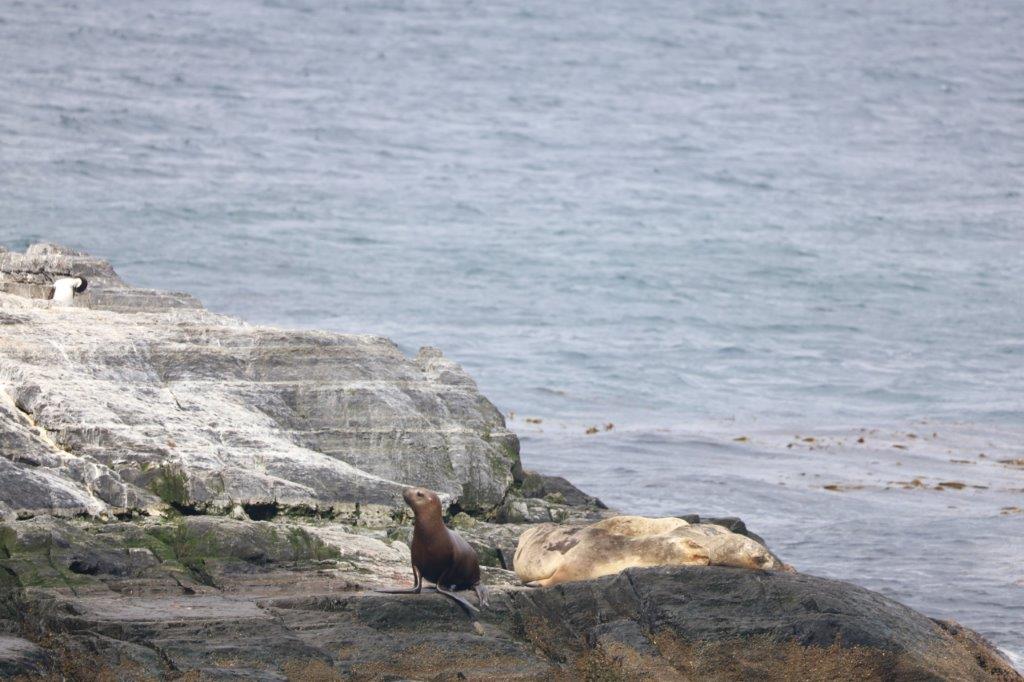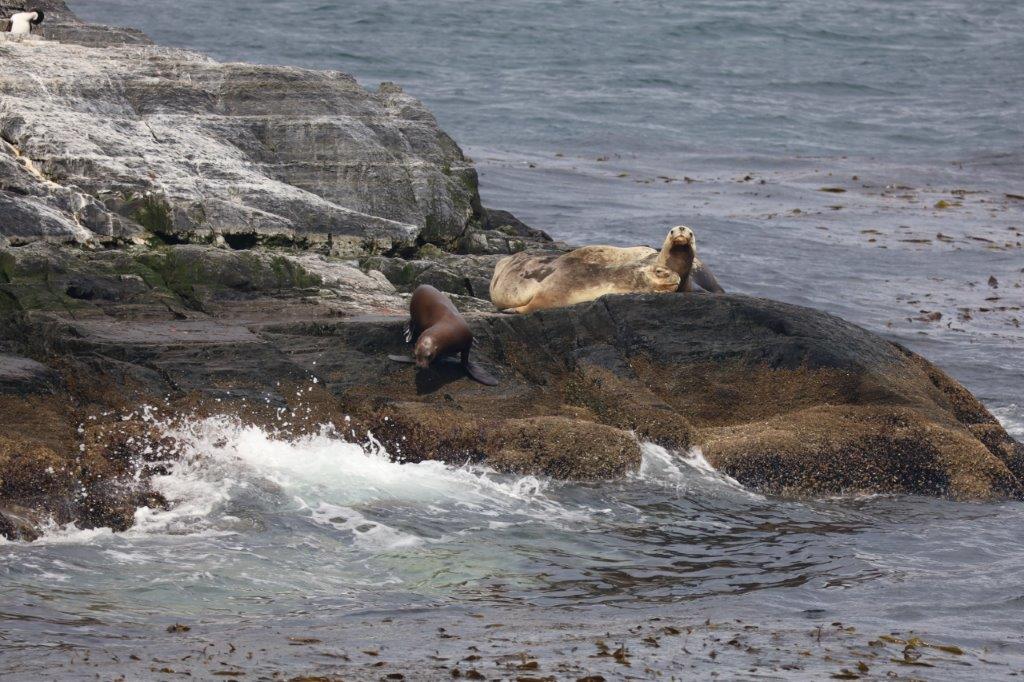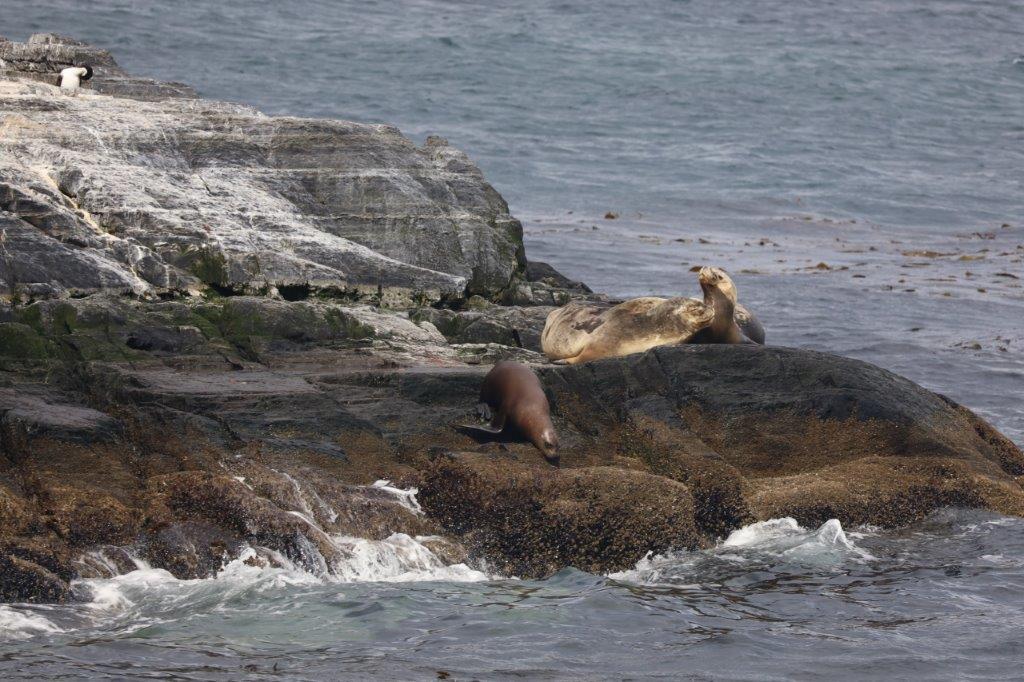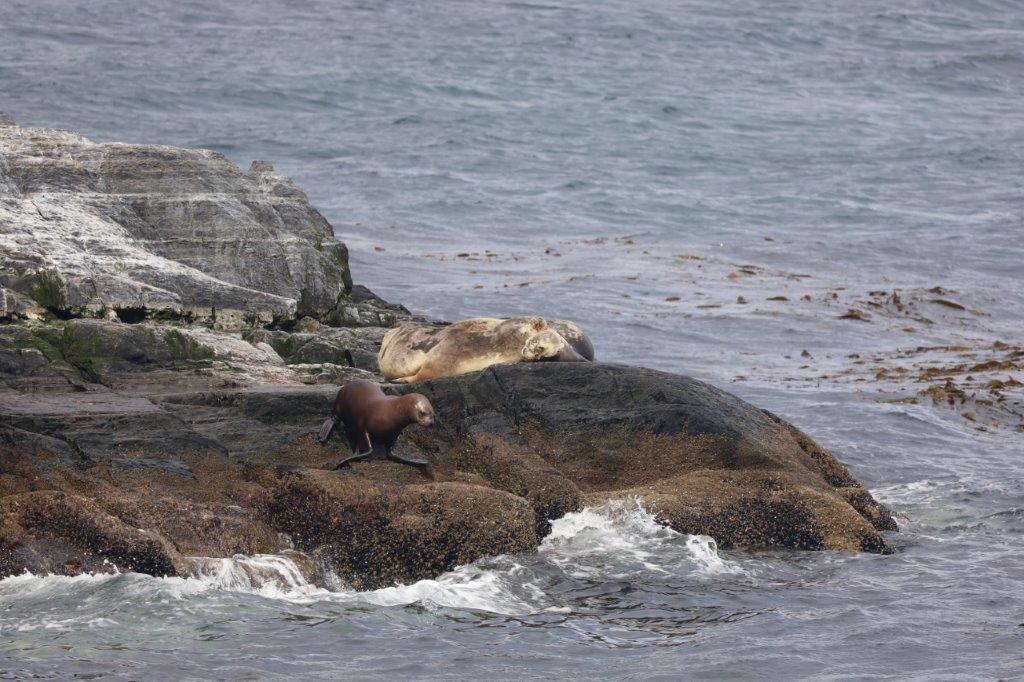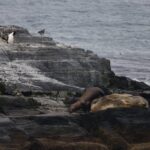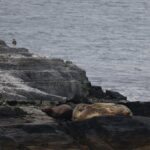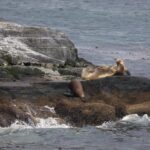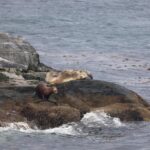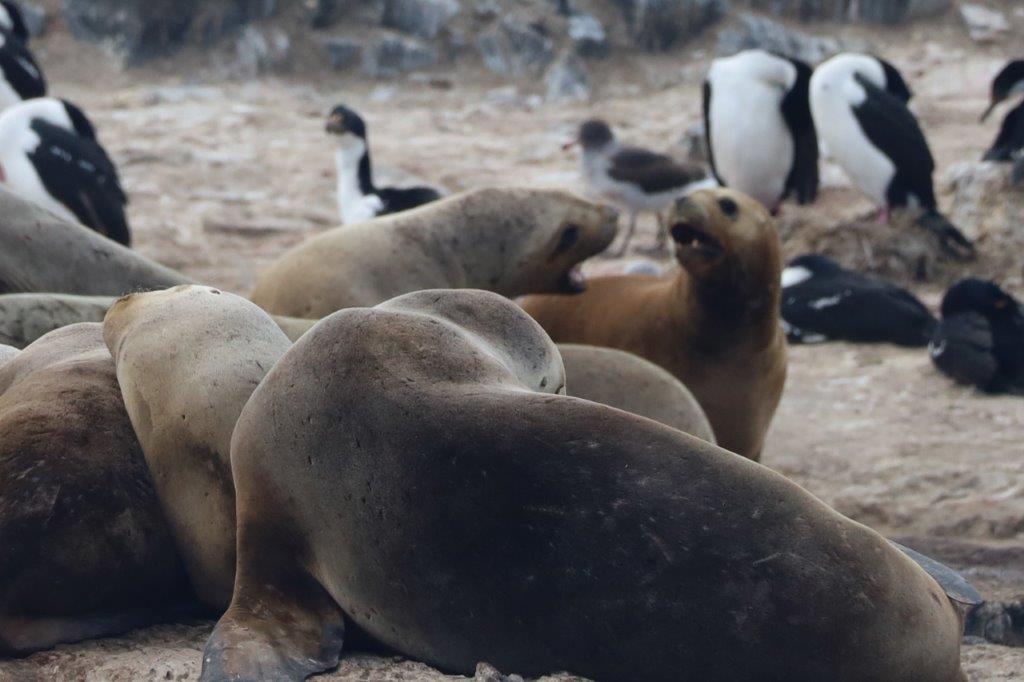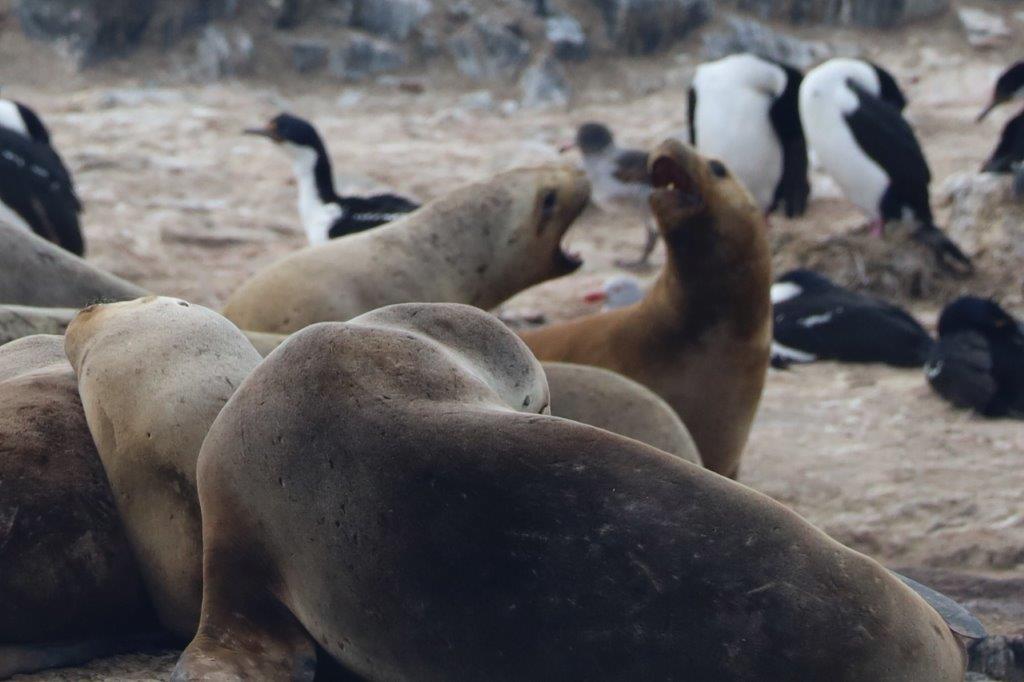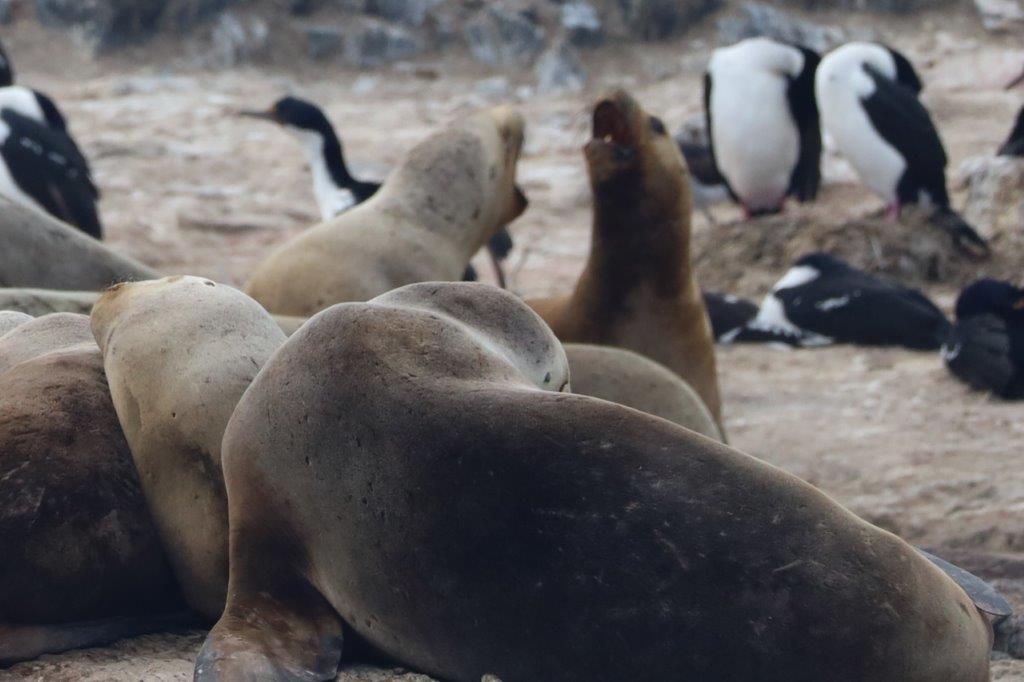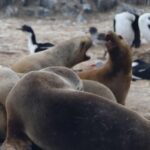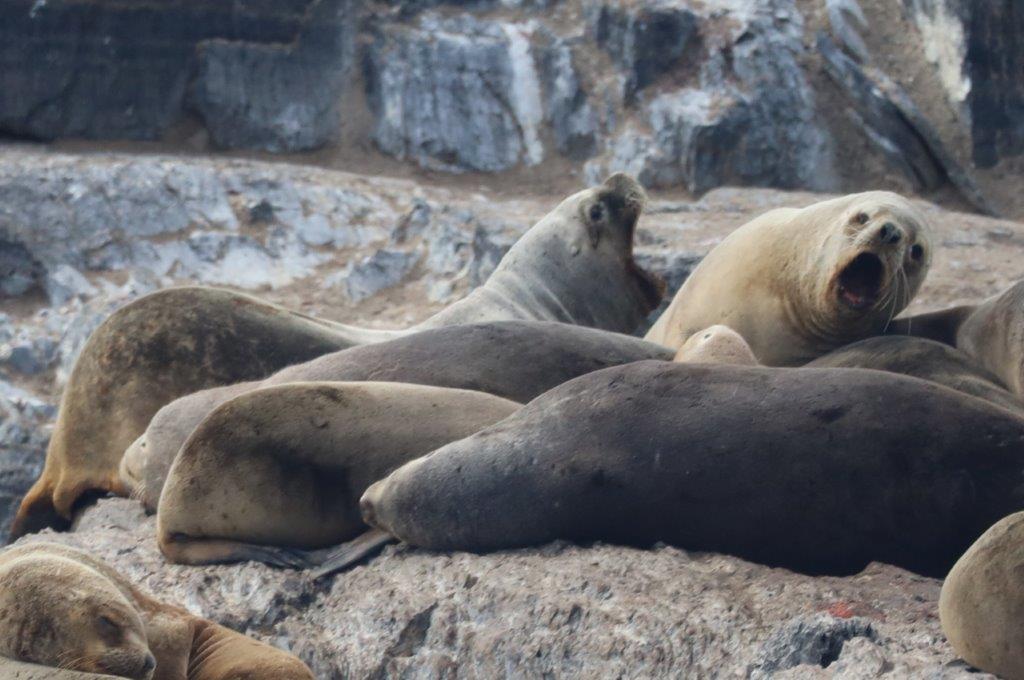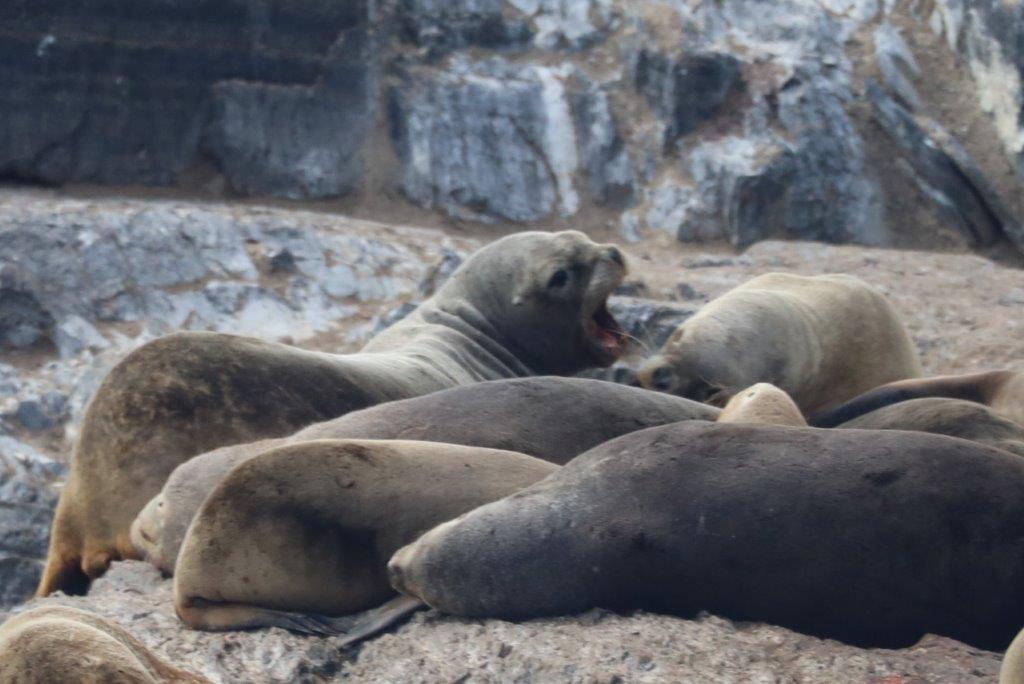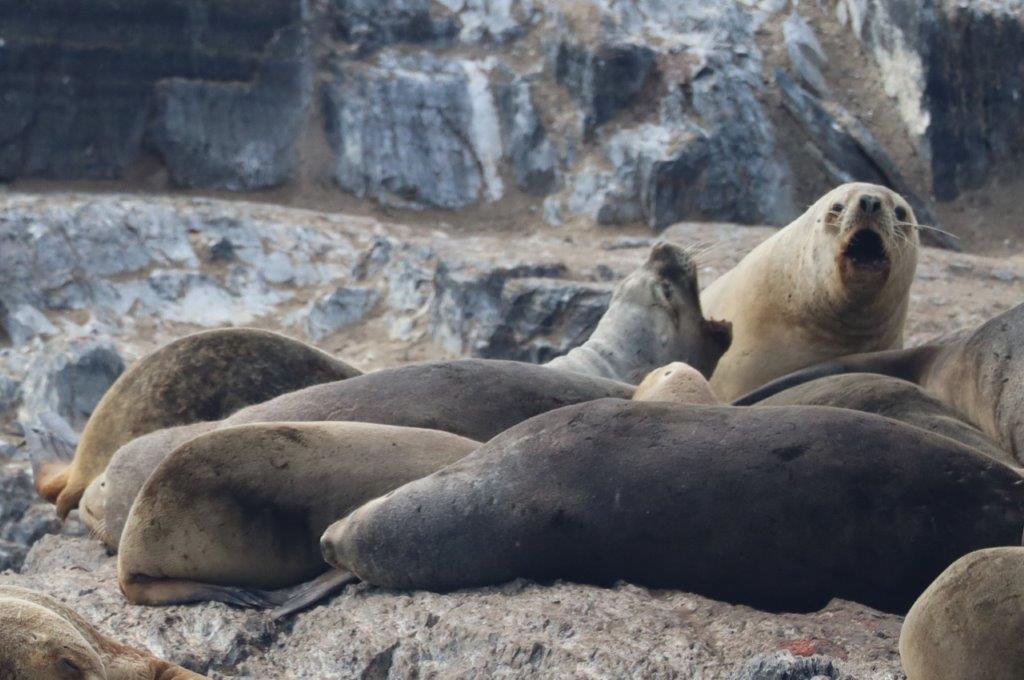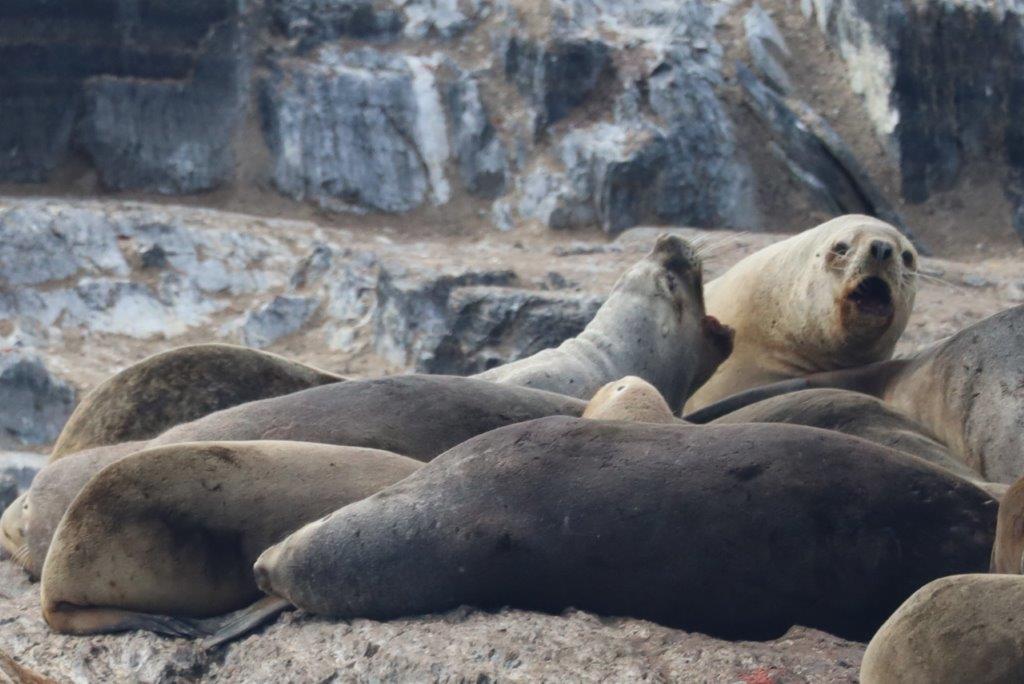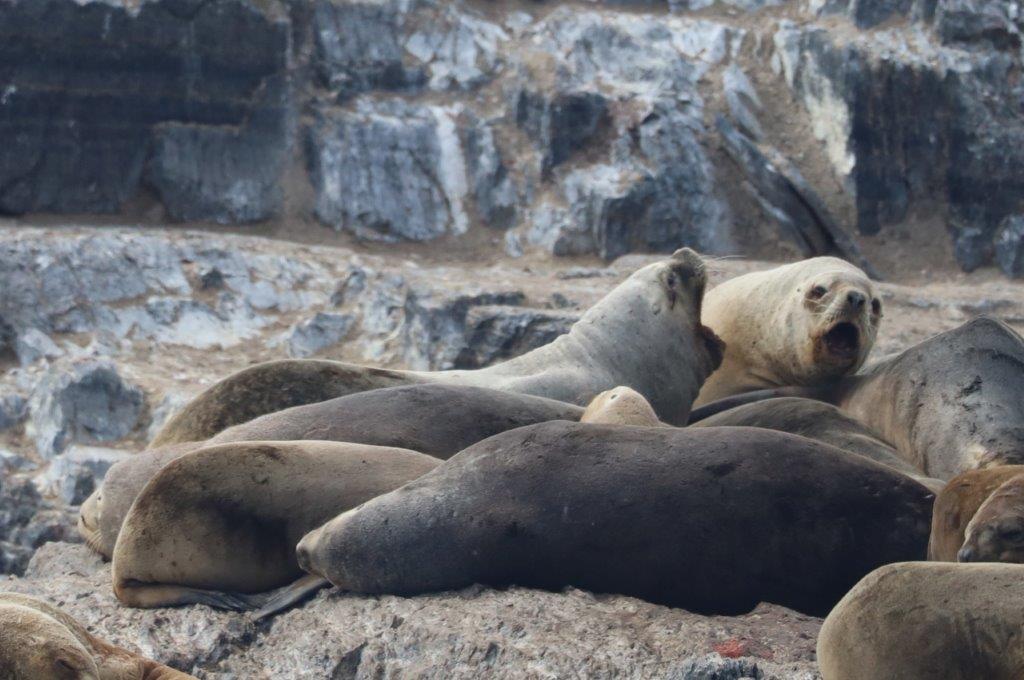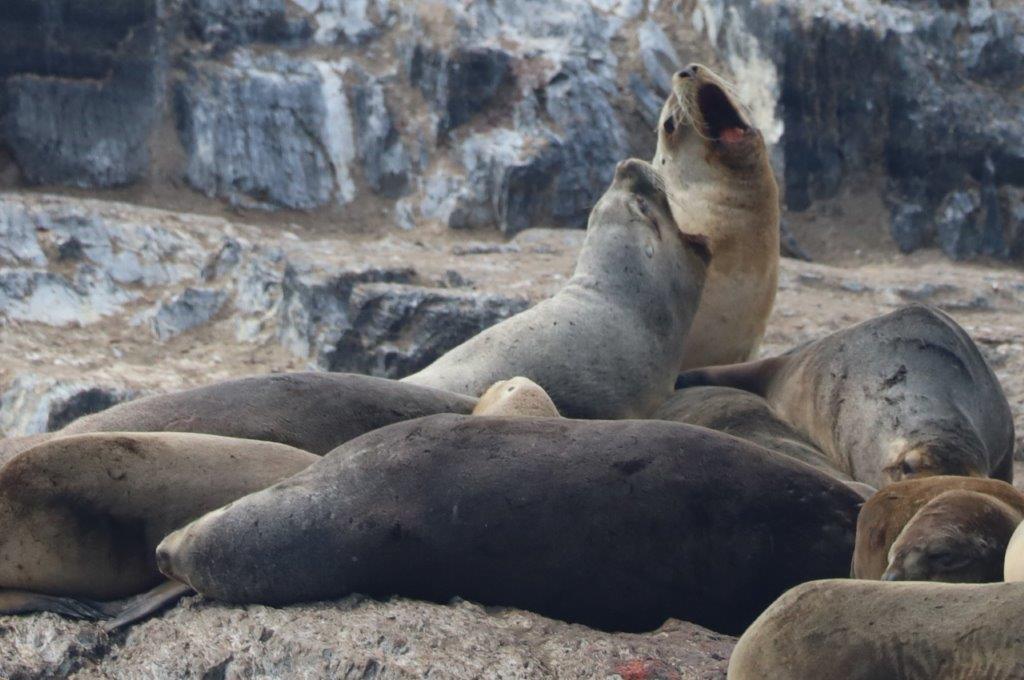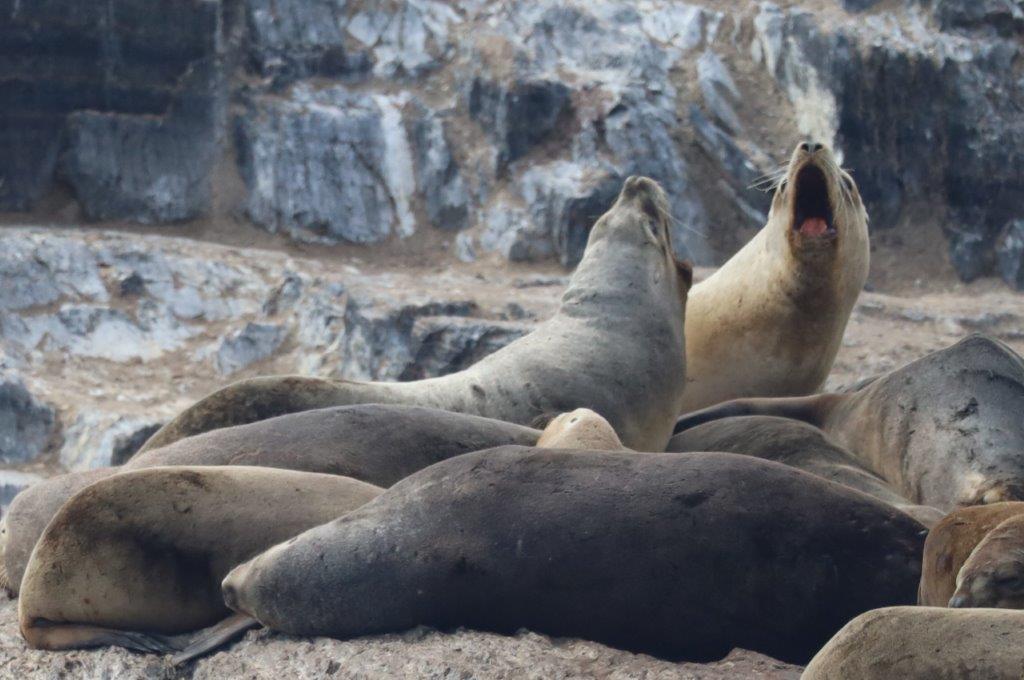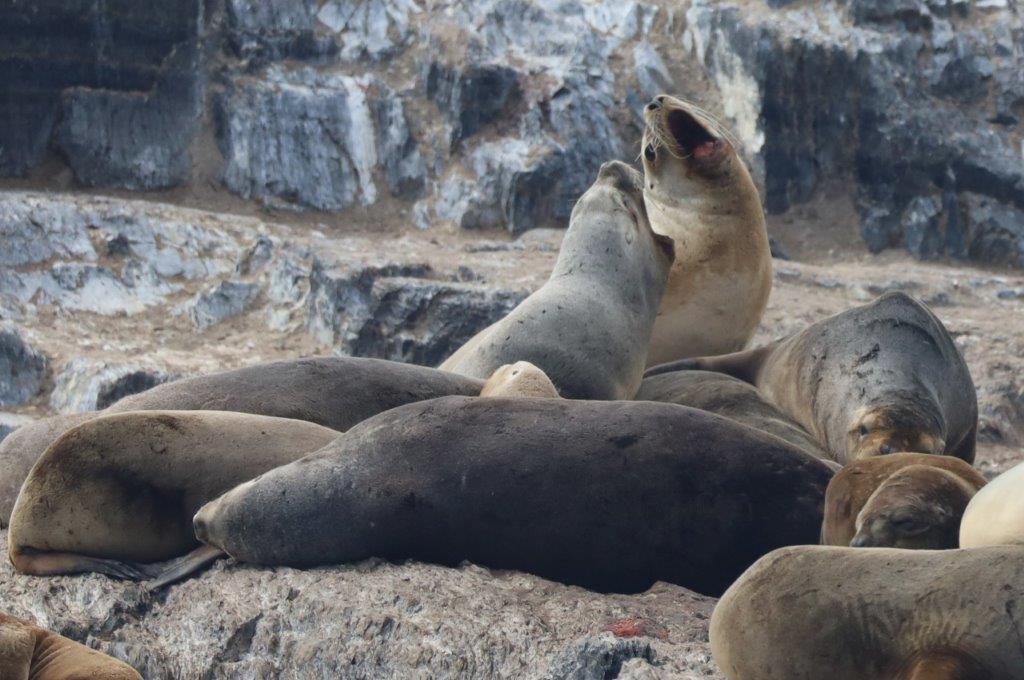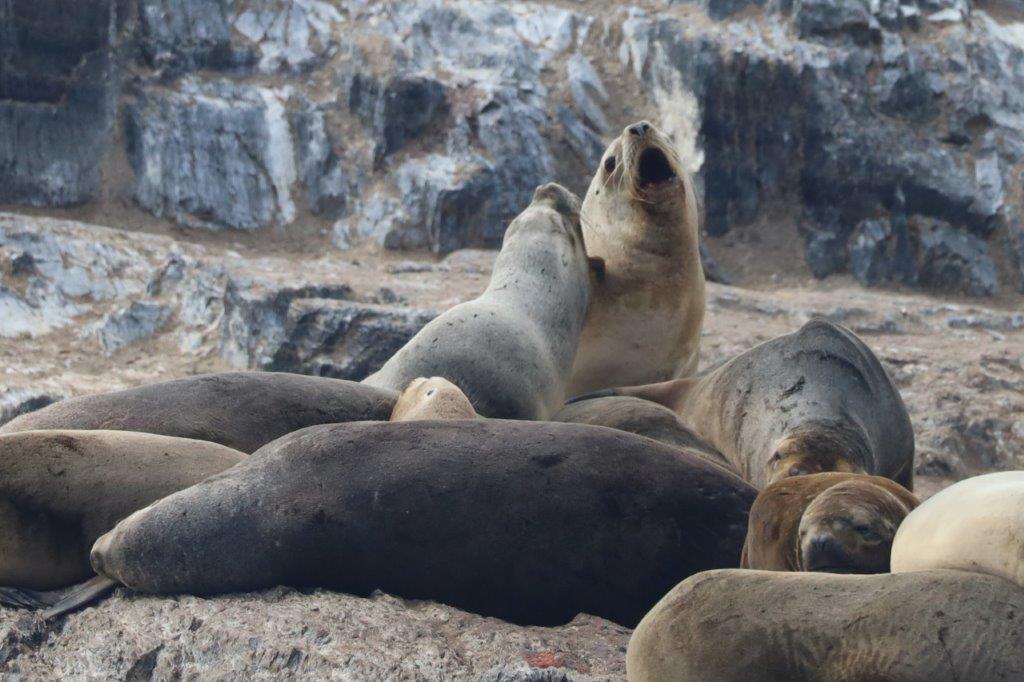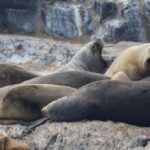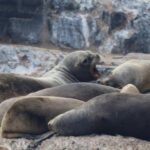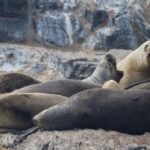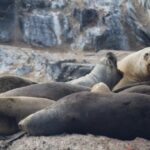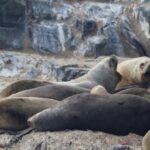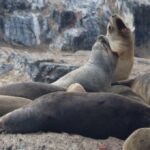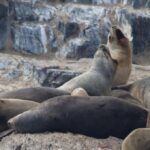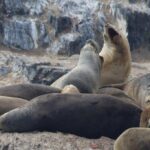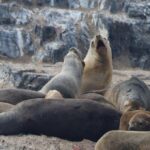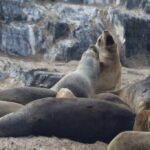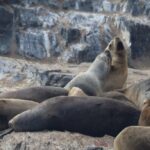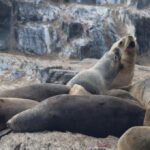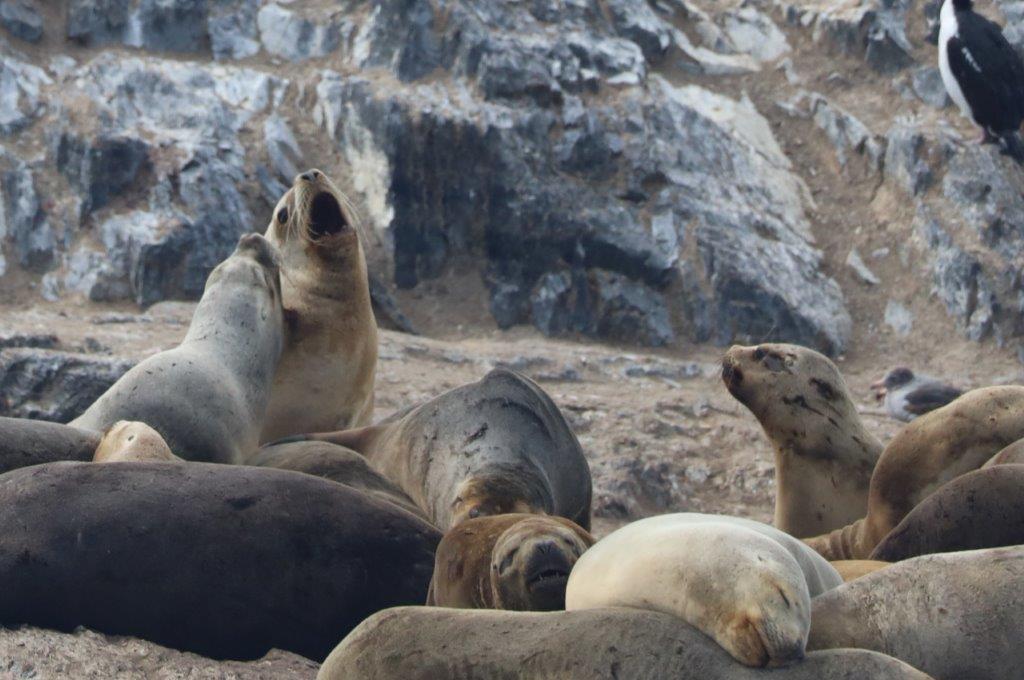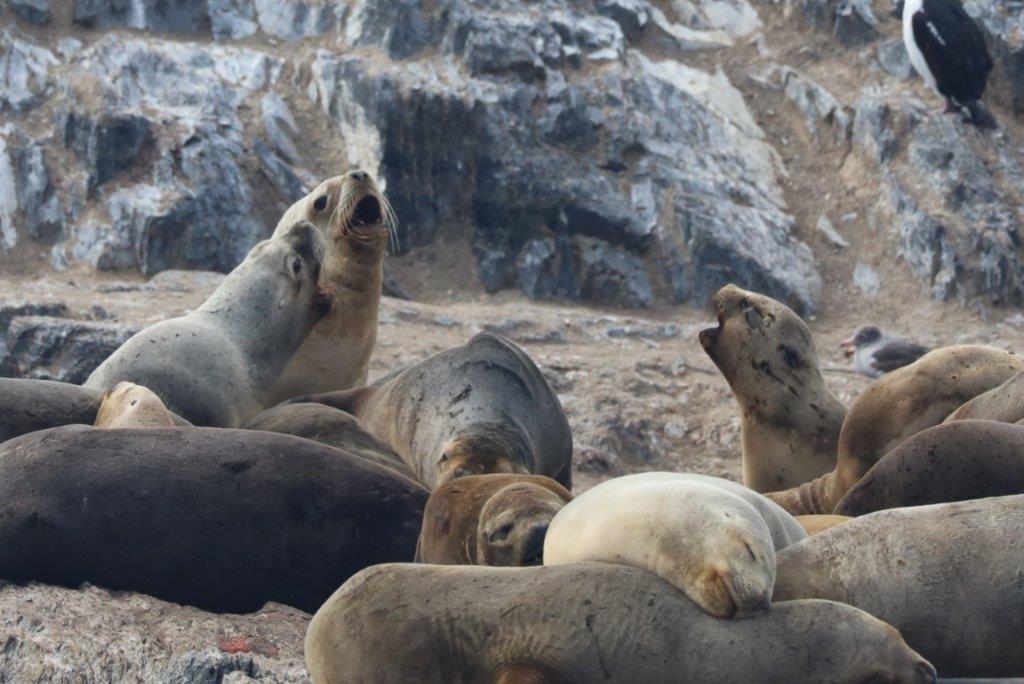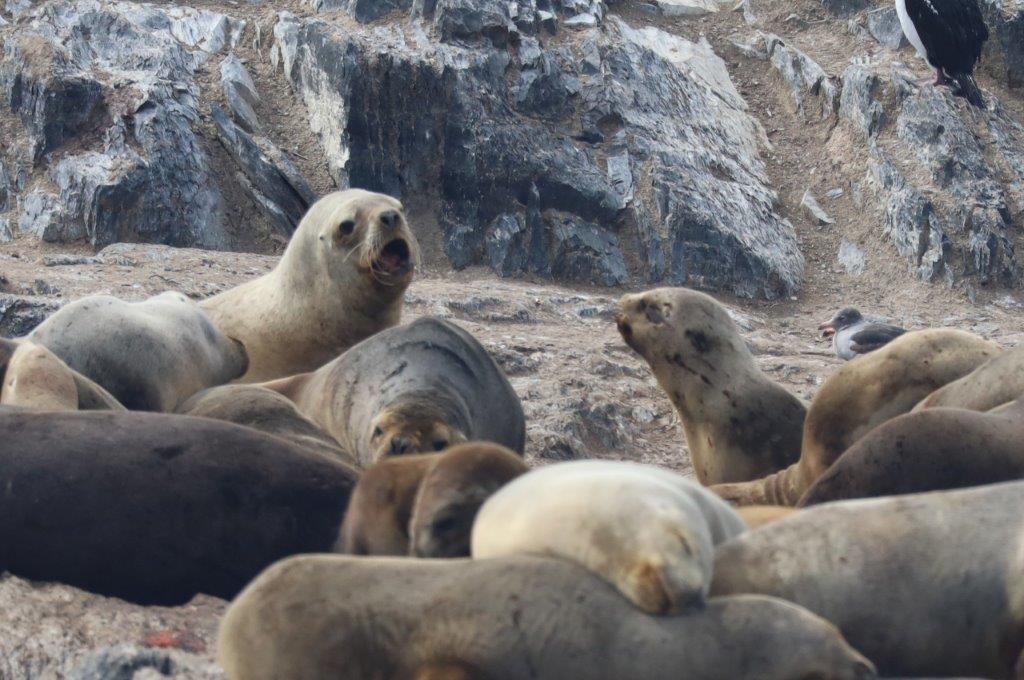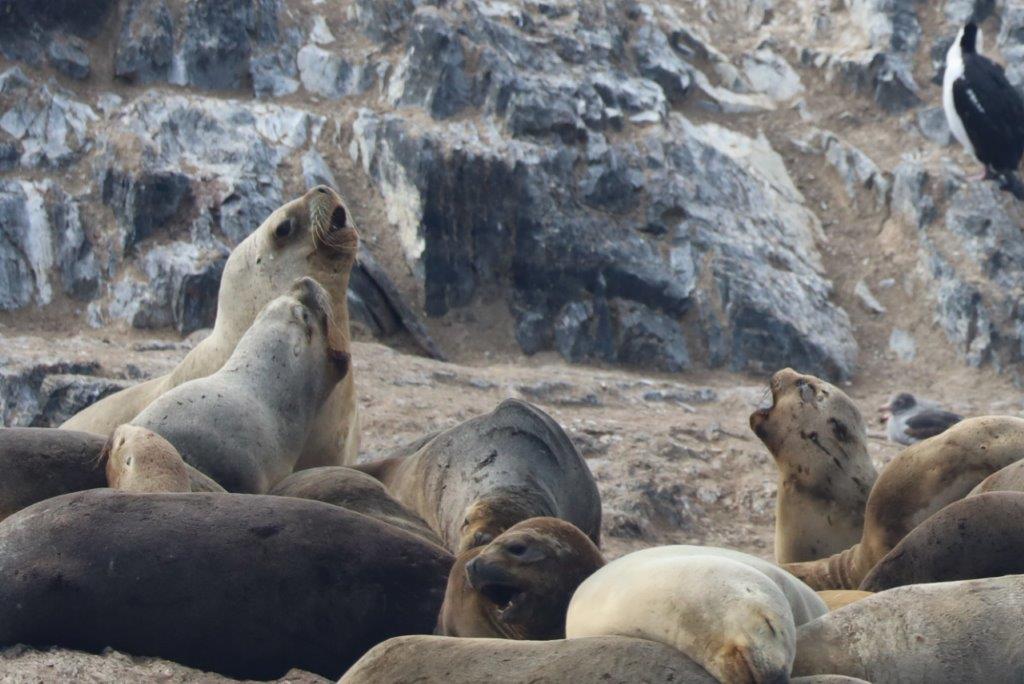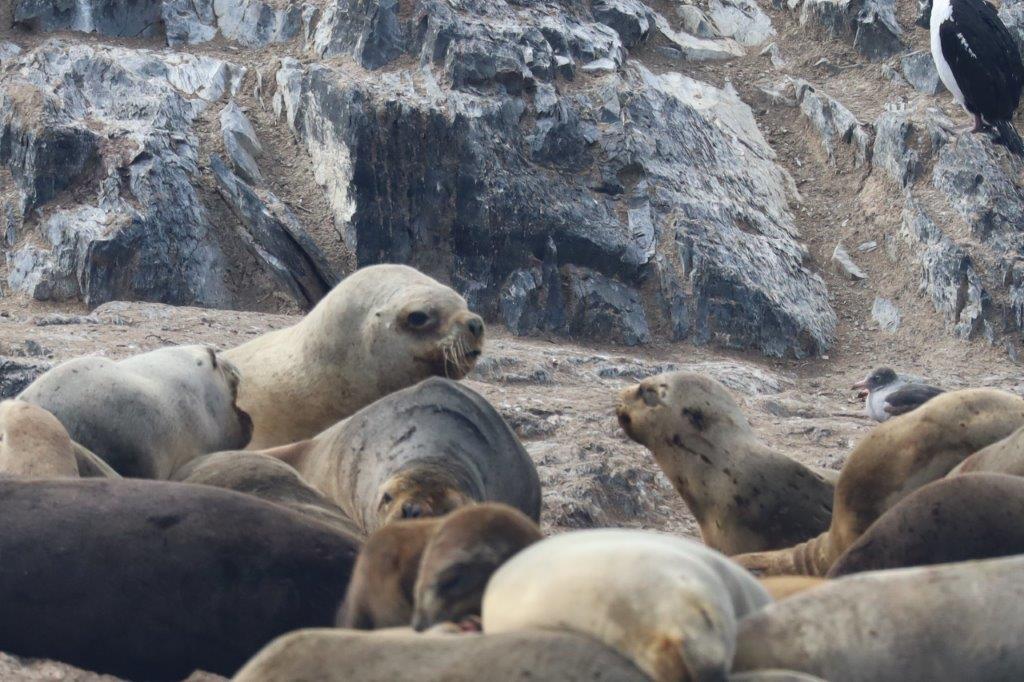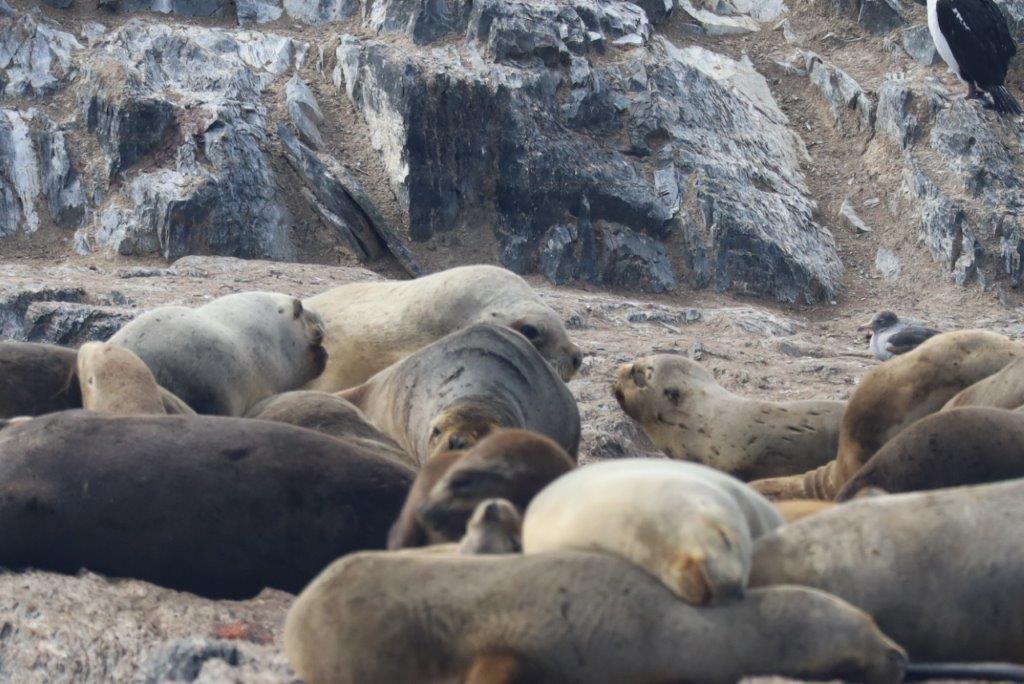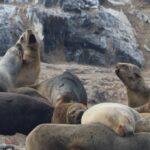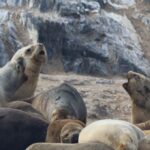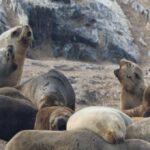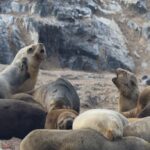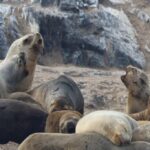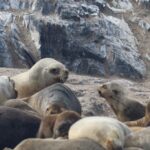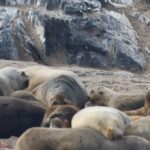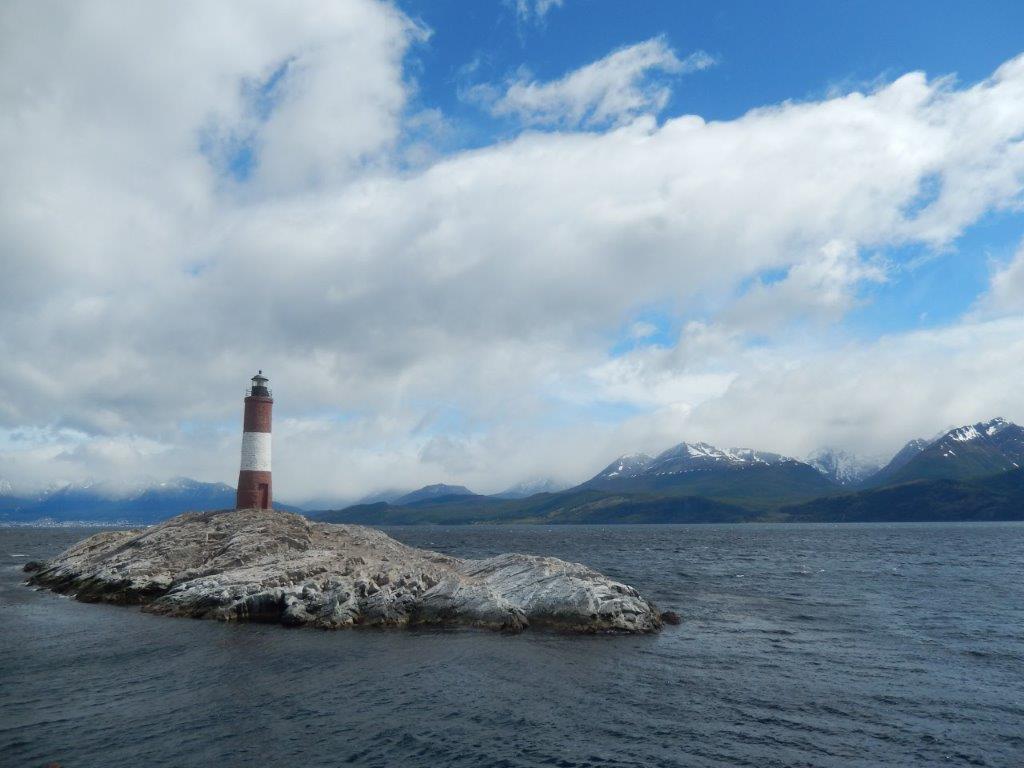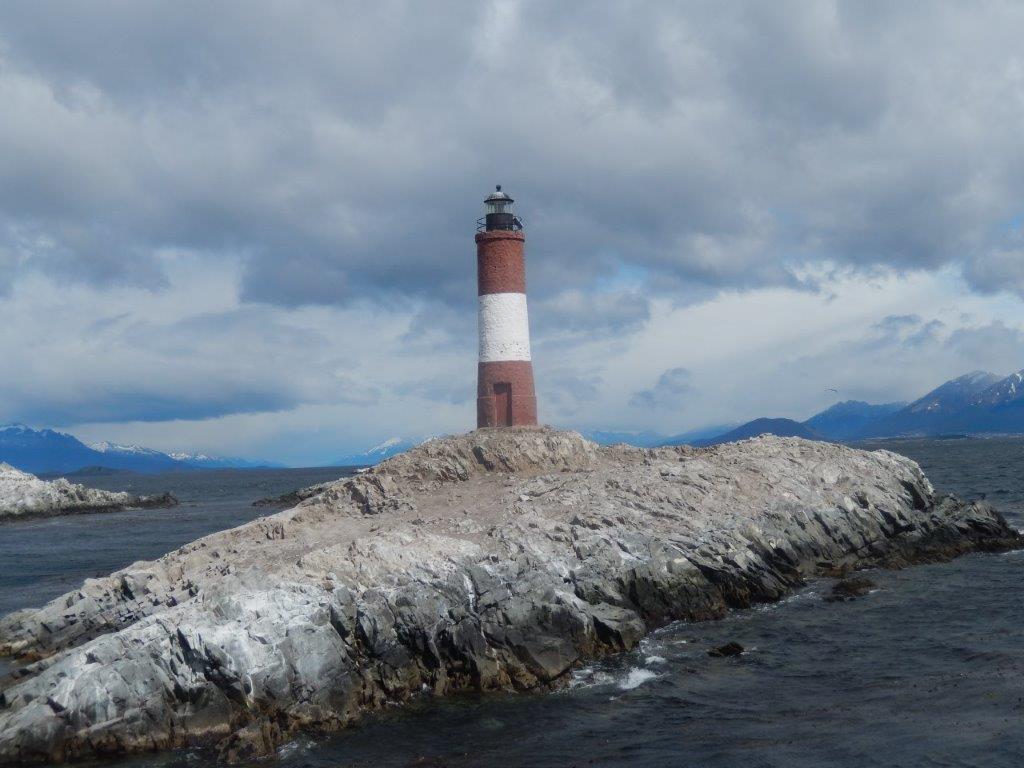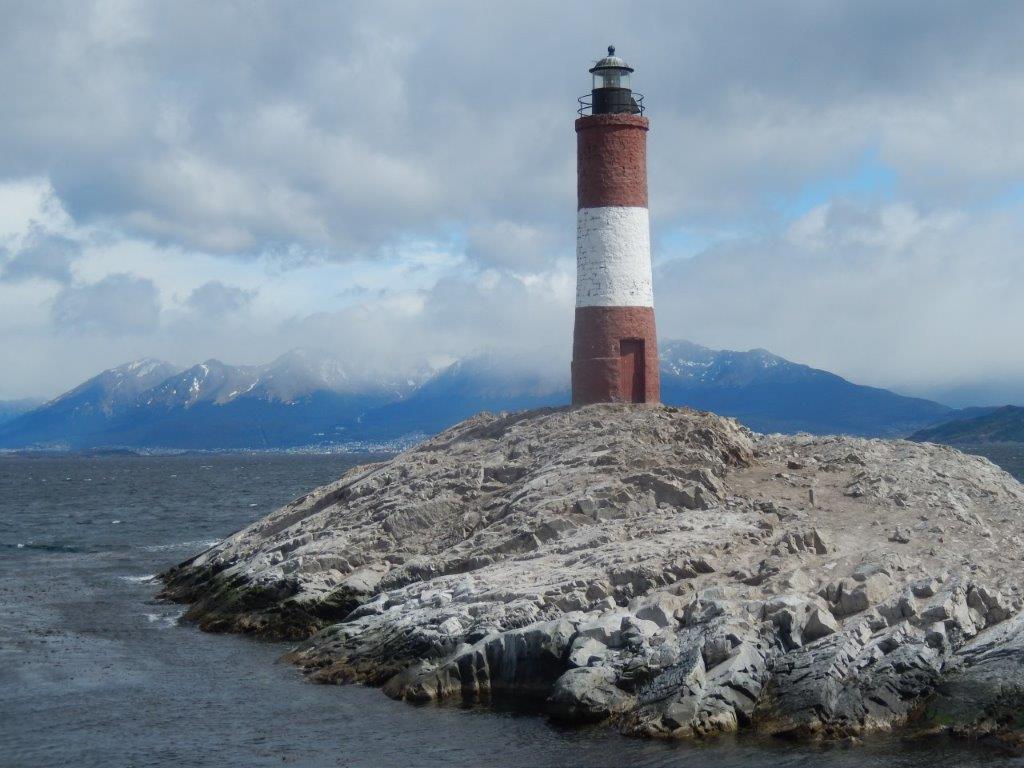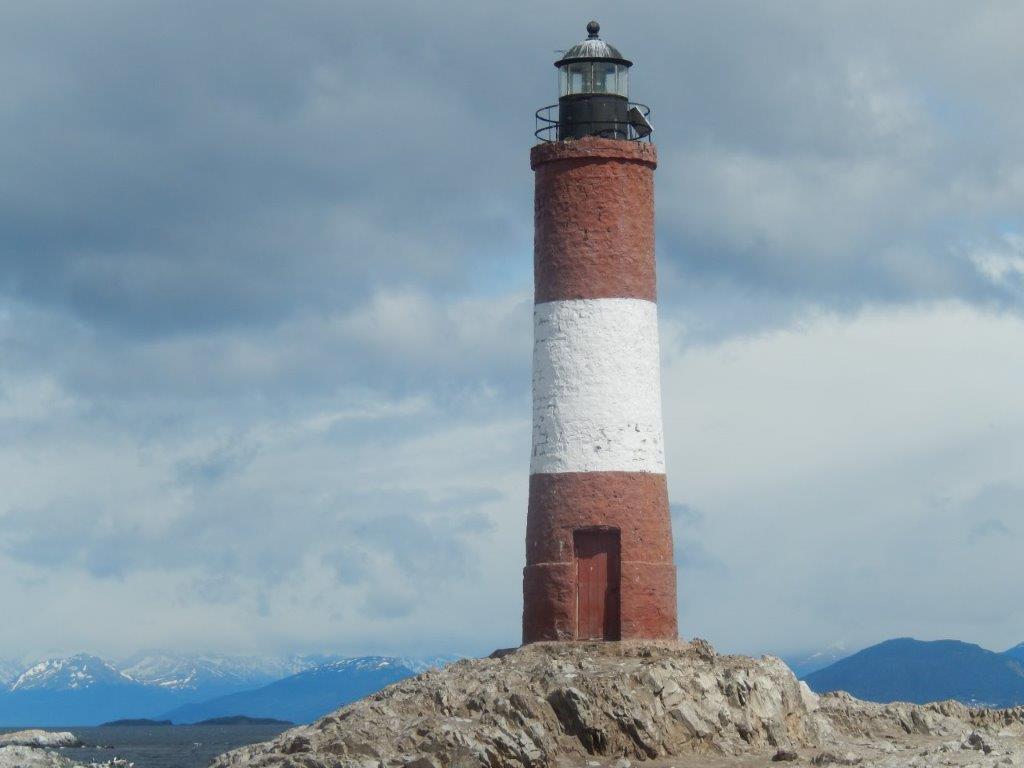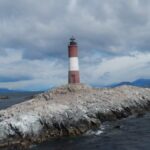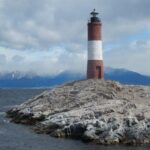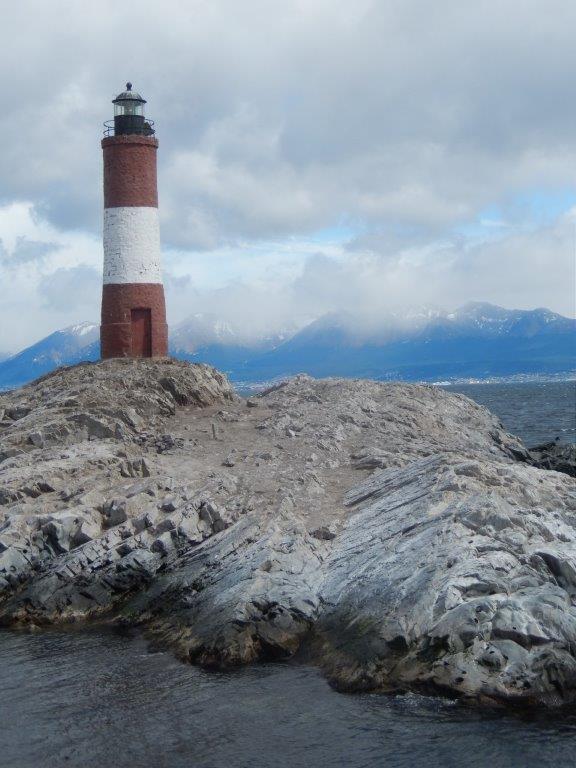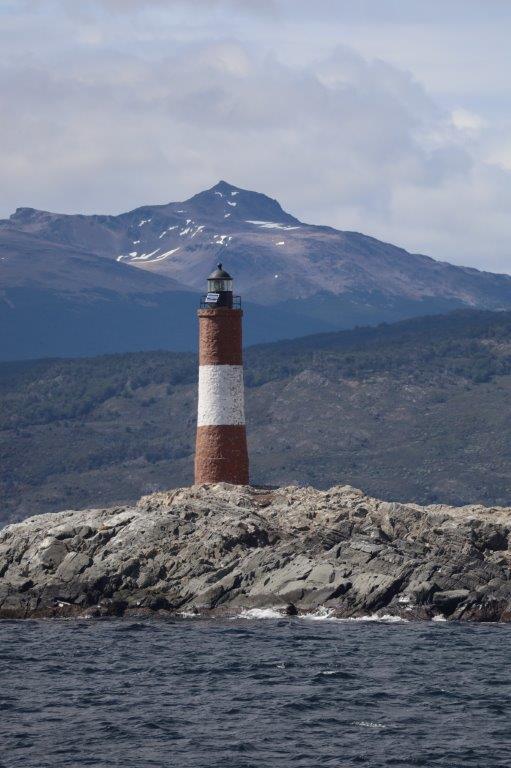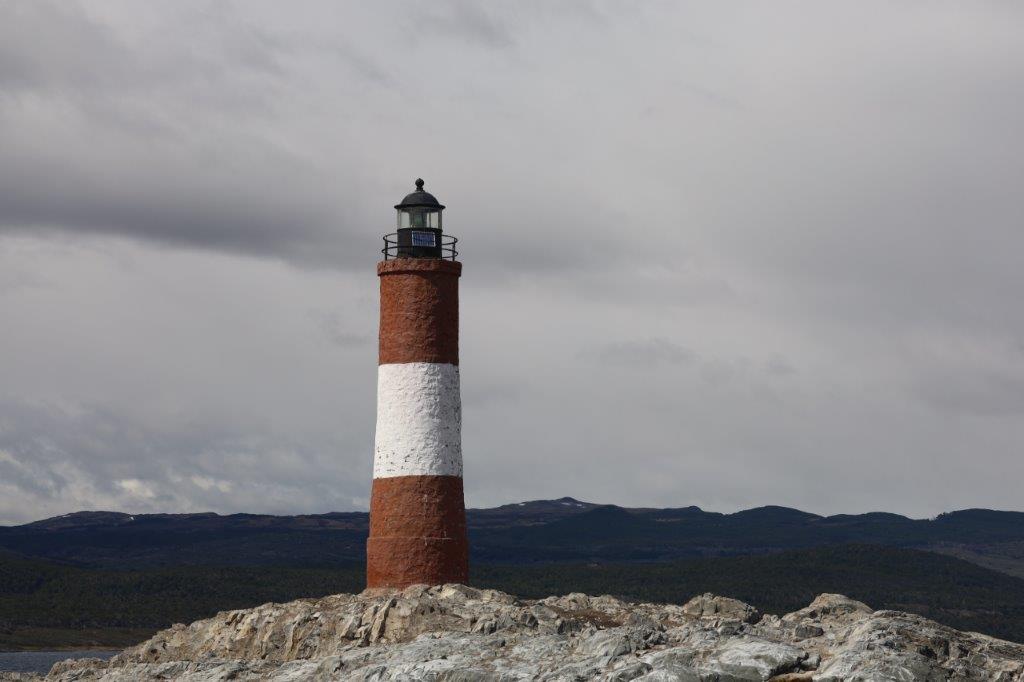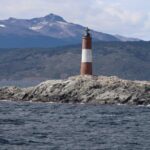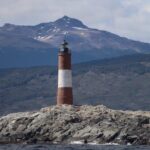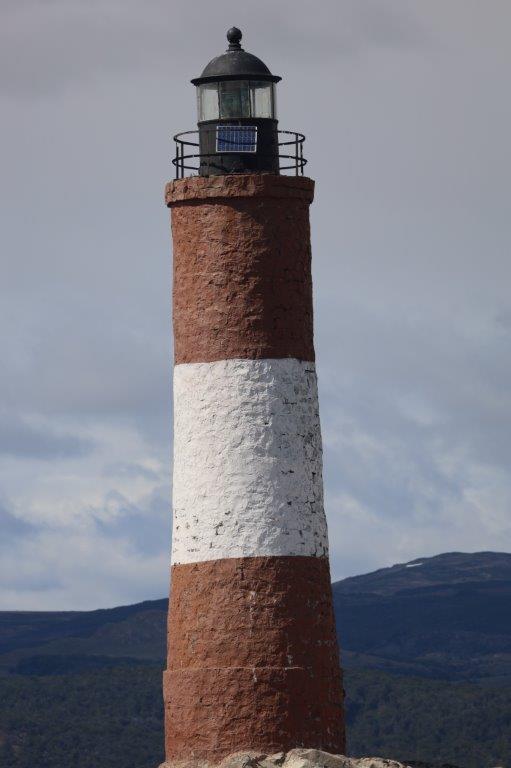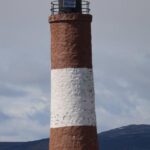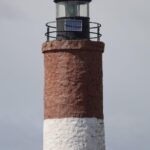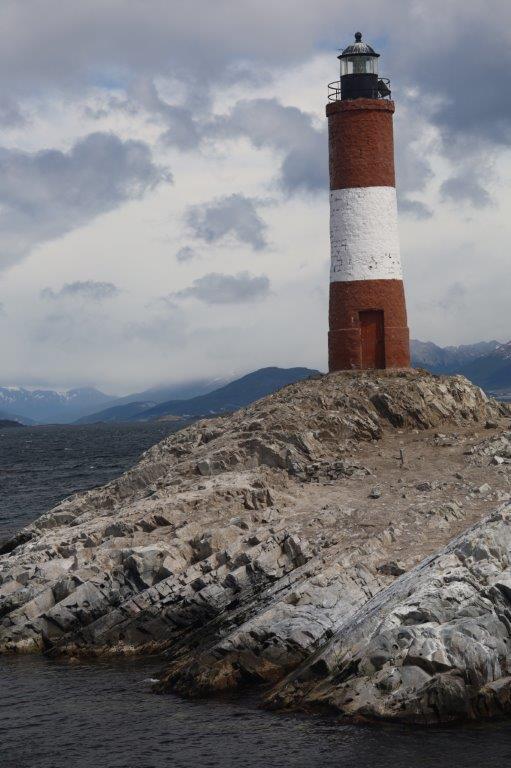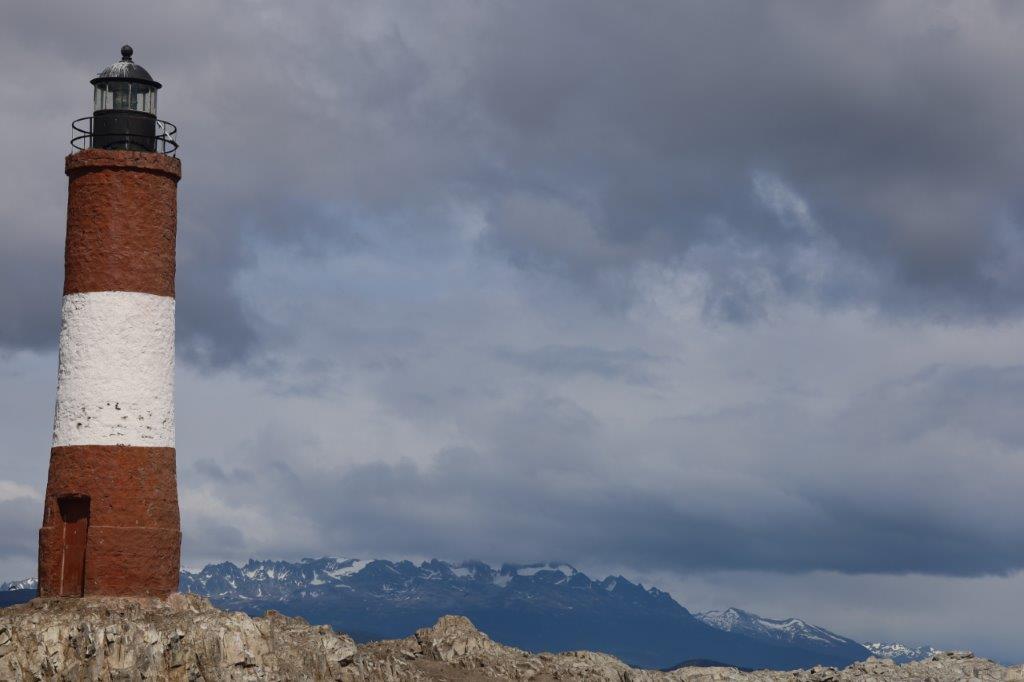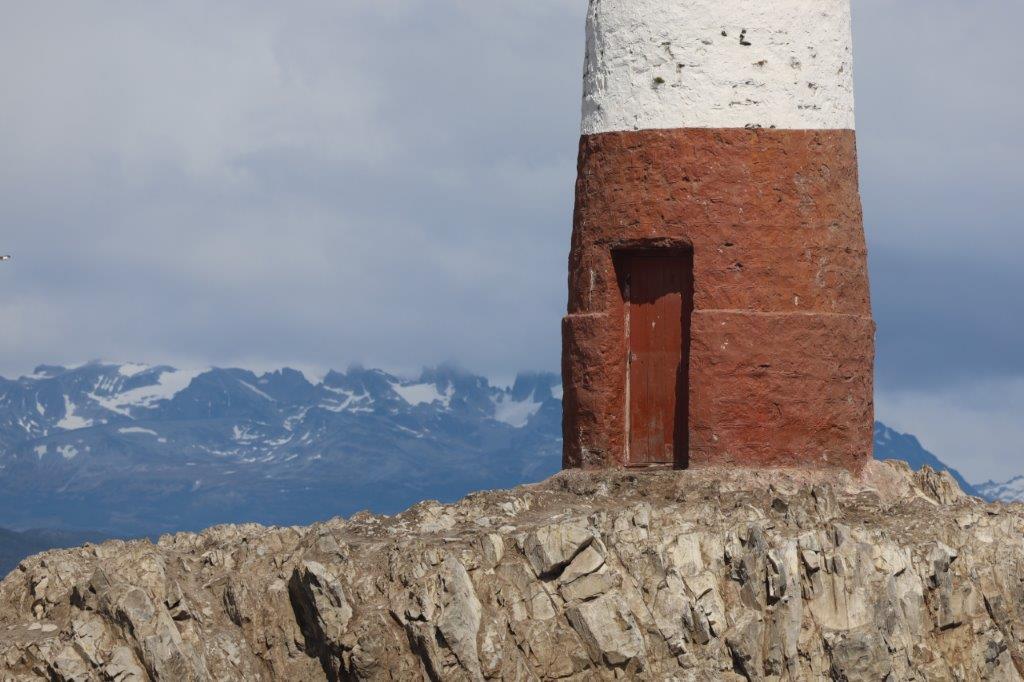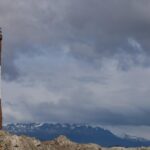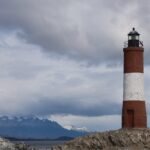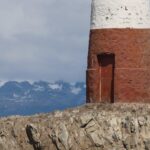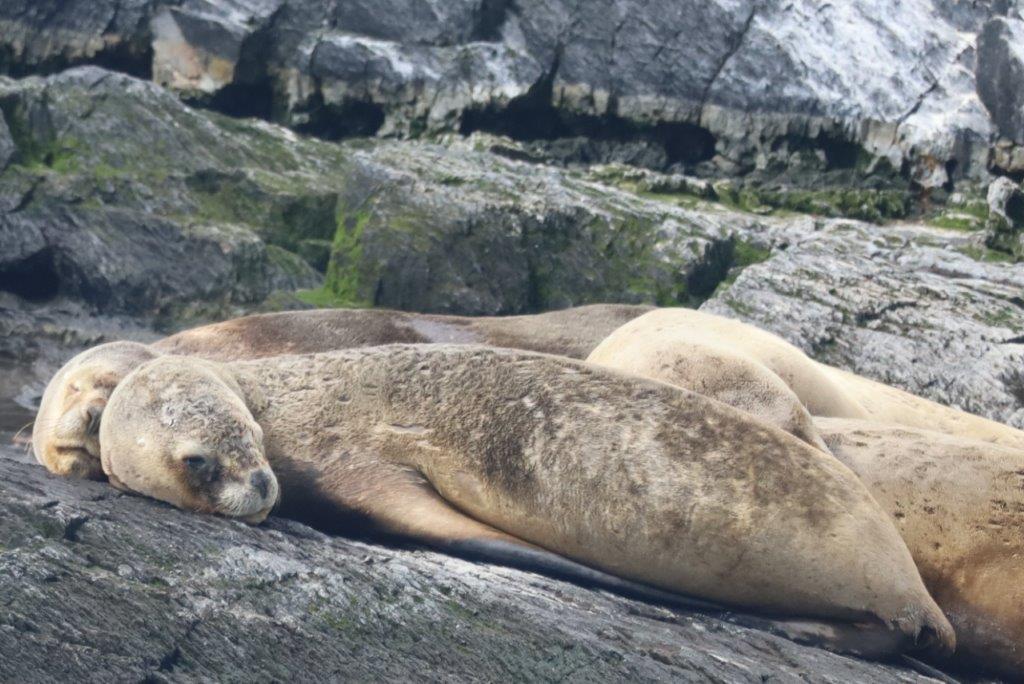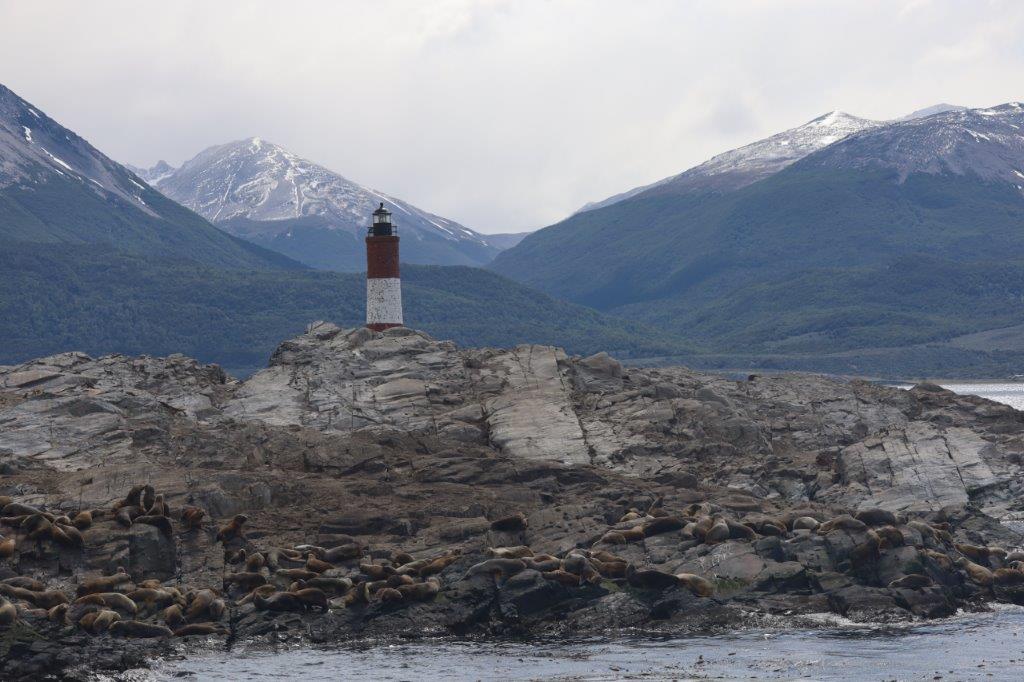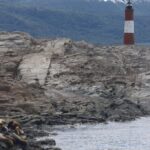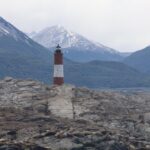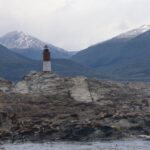41. Argentina: In Darwin’s wake on the Beagle Channel
Charles Darwin and his journey on the Beagle
There are loads of quizzes in the world, like knowledge quizzes, pop quizzes, pub quizzes, travel quizzes, etcetera. The Wandelgek often took part in answering those, like what is your favorite destination?, who are your favorite band?, What is the best beer?, etcetera. Regurlarly the question: Who is your favorite scientist? passes by. Well itvis Charles Darwin. He was a travelling and discovering scientist so it is not such a strange choice. He didn’t think of his great theories from behind a desk, but got his ideas from first hand experience by travelling to the furthest reaches of our planet and not without risk either. Those journeys in those days were not the regular cup of tea. They were dangerous because of the relatively small wooden ships in which they were executed and because of the heavy weather and extreme temperatures (cold as well as hot) on the road. But Darwin travelled anyway and came up with some brilliant ideas on the go, just by observing nature with an open mind (for which he had to abandon some dogmatic believes which were then taught by the priests of his religion.
He wrote at least two brilliant books:
- The Voyage of the Beagle, is the title most commonly given to the book written by Charles Darwin and published in 1839 as his Journal and Remarks, bringing him considerable fame and respect. This was the third volume of The Narrative of the Voyages of H.M. Ships Adventure and Beagle, the other volumes of which were written or edited by the commanders of the ships. Journal and Remarks covers Darwin’s part in the second survey expedition of the ship HMS Beagle. Due to the popularity of Darwin’s account, the publisher reissued it later in 1839 as Darwin’s Journal of Researches, and the revised second edition published in 1845 used this title. A republication of the book in 1905 introduced the title The Voyage of the “Beagle”, by which it is now best known. Beagle sailed from Plymouth Sound on 27 December 1831 under the command of Captain Robert FitzRoy. While the expedition was originally planned to last two years, it lasted almost five—Beagle did not return until 2 October 1836. Darwin spent most of this time exploring on land (three years and three months on land; 18 months at sea). The book is a vivid travel memoir as well as a detailed scientific field journal covering biology, geology, and anthropology that demonstrates Darwin’s keen powers of observation, written at a time when Western Europeans were exploring and charting the whole world. Although Darwin revisited some areas during the expedition, for clarity the chapters of the book are ordered by reference to places and locations rather than by date. Darwin’s notes made during the voyage include comments hinting at his changing views on the fixity of species. On his return, he wrote the book based on these notes, at a time when he was first developing his theories of evolution through common descent and natural selection. The book includes some suggestions of his ideas, particularly in the second edition of 1845.
 On the Origin of Species, On the Origin of Species (or, more completely, On the Origin of Species by Means of Natural Selection, or the Preservation of Favoured Races in the Struggle for Life) is a work of scientific literature by Charles Darwin that is considered to be the foundation of evolutionary biology; it was published on 24 November 1859. Darwin’s book introduced the scientific theory that populations evolve over the course of generations through a process of natural selection although Lamarckism was also included as a mechanism of lesser importance. The book presented a body of evidence that the diversity of life arose by common descent through a branching pattern of evolution. Darwin included evidence that he had collected on the Beagle expedition in the 1830s and his subsequent findings from research, correspondence, and experimentation. The opening sentences demonstrate that Darwin did not see the role of natural selection in species conformity or what is now called stabilizing selection. This was not corrected in editions subsequent to Darwin reading the correct explanation In Patrick Matthew’s book in 1860 which had been published in 1831. Various evolutionary ideas had already been proposed to explain new findings in biology. There was growing support for such ideas among dissident anatomists and the general public, but during the first half of the 19th century the English scientific establishment was closely tied to the Church of England, while science was part of natural theology. Ideas about the transmutation of species were controversial as they conflicted with the beliefs that species were unchanging parts of a designed hierarchy and that humans were unique, unrelated to other animals. The political and theological implications were intensely debated, but transmutation was not accepted by the scientific mainstream. The book was written for non-specialist readers and attracted widespread interest upon its publication. Darwin was already highly regarded as a scientist, so his findings were taken seriously and the evidence he presented generated scientific, philosophical, and religious discussion. The debate over the book contributed to the campaign by T. H. Huxley and his fellow members of the X Club to secularise science by promoting scientific naturalism. Within two decades, there was widespread scientific agreement that evolution, with a branching pattern of common descent, had occurred, but scientists were slow to give natural selection the significance that Darwin thought appropriate. During “the eclipse of Darwinism” from the 1880s to the 1930s, various other mechanisms of evolution were given more credit. With the development of the modern evolutionary synthesis in the 1930s and 1940s, Darwin’s concept of evolutionary adaptation through natural selection became central to modern evolutionary theory, and it has now become the unifying concept of the life sciences.
On the Origin of Species, On the Origin of Species (or, more completely, On the Origin of Species by Means of Natural Selection, or the Preservation of Favoured Races in the Struggle for Life) is a work of scientific literature by Charles Darwin that is considered to be the foundation of evolutionary biology; it was published on 24 November 1859. Darwin’s book introduced the scientific theory that populations evolve over the course of generations through a process of natural selection although Lamarckism was also included as a mechanism of lesser importance. The book presented a body of evidence that the diversity of life arose by common descent through a branching pattern of evolution. Darwin included evidence that he had collected on the Beagle expedition in the 1830s and his subsequent findings from research, correspondence, and experimentation. The opening sentences demonstrate that Darwin did not see the role of natural selection in species conformity or what is now called stabilizing selection. This was not corrected in editions subsequent to Darwin reading the correct explanation In Patrick Matthew’s book in 1860 which had been published in 1831. Various evolutionary ideas had already been proposed to explain new findings in biology. There was growing support for such ideas among dissident anatomists and the general public, but during the first half of the 19th century the English scientific establishment was closely tied to the Church of England, while science was part of natural theology. Ideas about the transmutation of species were controversial as they conflicted with the beliefs that species were unchanging parts of a designed hierarchy and that humans were unique, unrelated to other animals. The political and theological implications were intensely debated, but transmutation was not accepted by the scientific mainstream. The book was written for non-specialist readers and attracted widespread interest upon its publication. Darwin was already highly regarded as a scientist, so his findings were taken seriously and the evidence he presented generated scientific, philosophical, and religious discussion. The debate over the book contributed to the campaign by T. H. Huxley and his fellow members of the X Club to secularise science by promoting scientific naturalism. Within two decades, there was widespread scientific agreement that evolution, with a branching pattern of common descent, had occurred, but scientists were slow to give natural selection the significance that Darwin thought appropriate. During “the eclipse of Darwinism” from the 1880s to the 1930s, various other mechanisms of evolution were given more credit. With the development of the modern evolutionary synthesis in the 1930s and 1940s, Darwin’s concept of evolutionary adaptation through natural selection became central to modern evolutionary theory, and it has now become the unifying concept of the life sciences.
Both books are very different. It was the first book that really inspired me to read the 2nd book. A travel journal of Darwin’s own hand, written while he was on board of the Beagle. The Wandelgek felt a teeny weeny bitsy like Redmond O’Hanlon, who was on board a clipper named Amsterdam for the 2009/2010 Dutch-Flemish television series: Beagle: In het kielzog van Darwin (English: Beagle: In Darwin’s wake), to commemorate the 150th anniversary of Charles Darwin’s ground-breaking book On the Origin of Species. He wrote that book after his return home to Plymouth and his theories are still acknowledged as fundamental for how we nowadays look at the nature directly surrounding us.Questions like: How did we evolve? How did we adapt to changing conditions? and Why did we evolve the way we did?, all have their origin in this groundbreaking book. Most famous principle from this book is undoubtedly: Survival of the fittest.
Most famous part of his travels is the visit to the Galapagos archipelago, but he also travelled along the south american coast and through the Beagle Canal from the Atlantic to the Pacific Ocean.
Beagle Canal
This day would for a large part be about following in the wake of Charles Darwin while he was travelling on the Beagle Canal and about learning a bit more about this phenomenal mind.
The Wandelgek had a quick breakfast before leaving the hotel and descending towards the harbor area…
…where he boarded a ship for a tour on the Beagle Canal.
The ship set course north out of the habor area and then east. The Beagle Canal is half Chilean and half Argentinian near Ushuaia and further west it becomes completely Chilean.
The ship first passed by some of the ships which The Wandelgek had seen before last night. Some were transport ships, freighters, some were polar expedition ships, some were arctic cruise ships…
Ushuaia and the Andes were always in the background.
Beagle Channel is a strait in the Tierra del Fuego Archipelago, on the extreme southern tip of South America between Chile and Argentina. The channel separates the larger main island of Isla Grande de Tierra del Fuego from various smaller islands including the islands of Picton, Lennox and Nueva; Navarino; Hoste; Londonderry; and Stewart. The channel’s eastern area forms part of the border between Chile and Argentina and the western area is entirely within Chile.
Isla Bridges
Then it arrived at the small island Isla Bridges, which only had a small wooden cabin on the beach. Further on top of a small hill were all sorts of educational displays to inform people about the area. There was a good view over Ushuaia from the island’s top…
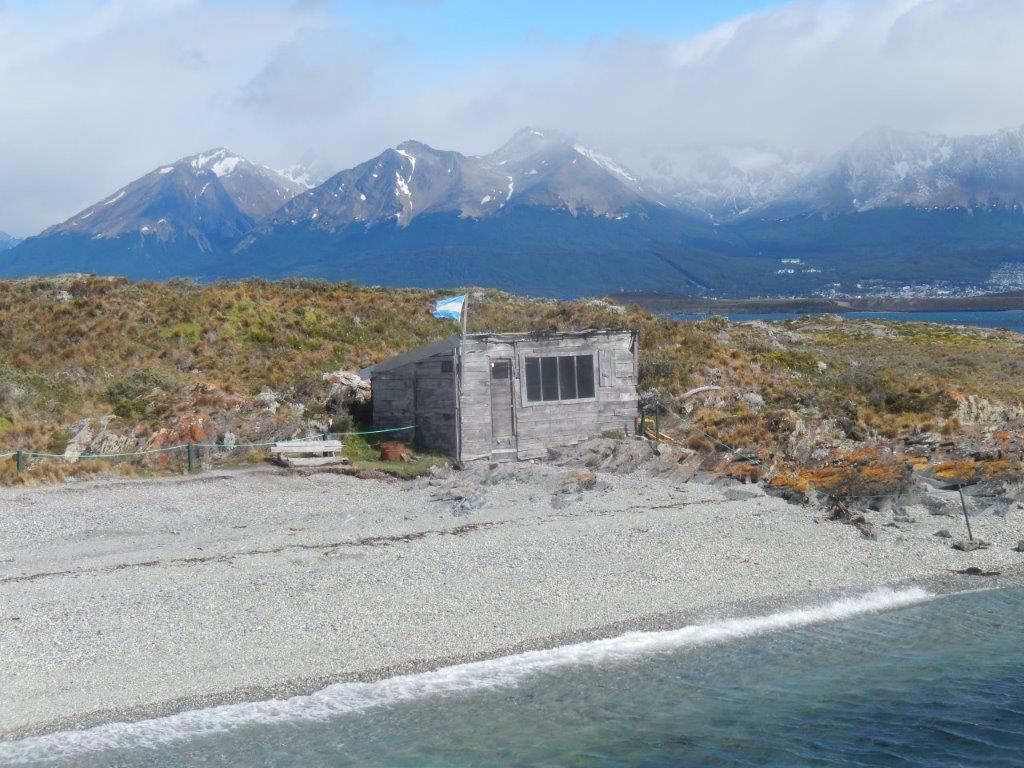 The information signs showed the island, its port at Puerto Karelo and what could be seen looking East, West and North…
The information signs showed the island, its port at Puerto Karelo and what could be seen looking East, West and North…
Those views got better and better now that the clouds above the Beagle Canal dissolved…
Above the surrounding mountains the clouds were still present though…
Seagul Island?
Next the ship directed its bough towards something looking like a snow covered island. Around the canal were the Andes mountains with multiple bright white shiny snowcapped summits to admire. The island was much lower though but also bright white.
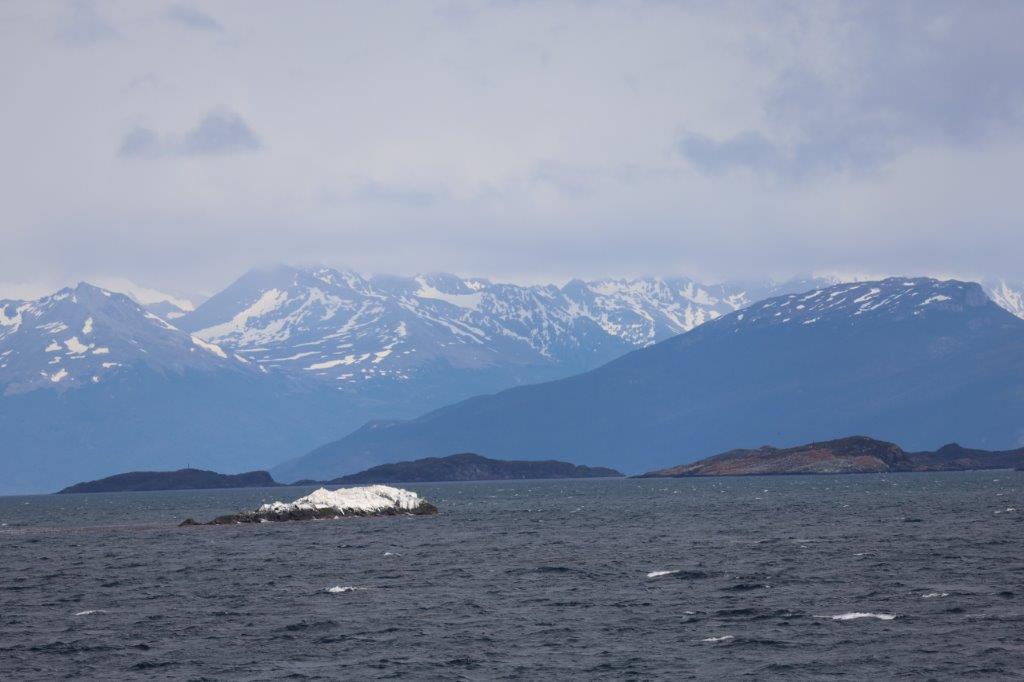 It was Seagul Island or so The Wandelgek imagined it. A name that could directly come from Treasure island’s pages or from a Pirates of the Caribean movie.
It was Seagul Island or so The Wandelgek imagined it. A name that could directly come from Treasure island’s pages or from a Pirates of the Caribean movie.
 But the closer the ship got to the island, the more The Wandelgek noticed that something was off.
But the closer the ship got to the island, the more The Wandelgek noticed that something was off.
And then he saw what it was and it completely changed his view on the island.
 It was not the pristine white snow covered island he had imagined, but instead it was a loo island for the many sea gulls and cormorrants that ingesteld the island and left their fluid white shit on top of it, thus painting the whole grey rocky island, bright, chalky white.
It was not the pristine white snow covered island he had imagined, but instead it was a loo island for the many sea gulls and cormorrants that ingesteld the island and left their fluid white shit on top of it, thus painting the whole grey rocky island, bright, chalky white.
Seagul Island thus became Loo Island!!!!.
Seal Island
The boat now circeled around another small island which lay full of seals, baking in the morning sunlight…
…after a swim and dive for breakfast.
Cormorrants are just frolicking around…
Some young ones are a bit more active than their parents, which is all too human…
Some seals were engaged in friendly talks…
… other talks were quite more aggresive…
…others had children which were bringing in arguments in clear disagreement with their parents…
… and of course looking dazed and confused after losing that argument…
 Dad has just now clarified his boundaries, meaning: “No further arguments allowed. OINK!”.
Dad has just now clarified his boundaries, meaning: “No further arguments allowed. OINK!”.
Southernmost lighthouse in the World Island
Les Eclaireurs Lighthouse (the French name “Les Éclaireurs” means “the Scouts”) is a slightly conically shaped lighthouse standing on the northeasternmost island of the five or more Les Eclaireurs islands, which it takes its name from, 5 nautical miles (9 km) east of Ushuaia in the Beagle Channel, Tierra del Fuego, southern Argentina.
The brick-built tower is 11 metres (36 ft) high and 3 metres (10 ft) wide at the base, with its windowless wall painted red-white-red and topped by a black lantern housing and gallery. Only a door pointing to the west provides access to the building. The light is 22.5 metres (74 ft) above sea level emitting white flashes every ten seconds with a range of 7.5 nautical miles (13.9 km). The lighthouse is still in operation, is remote-controlled, automated, uninhabited and is not open to the public, guarding the sea entrance to Ushuaia. Electricity is supplied by solar panels. The lighthouse was put into service on December 23, 1920.
It is a popular tourist attraction, reached on short boat tours from Ushuaia. It is known to the Argentines as the Lighthouse at the End of the World (Faro del fin del mundo), although that name is misleading. The lighthouse is often confused with the San Juan de Salvamento lighthouse on the east coast of the remote Isla de los Estados, made famous by Jules Verne in the novel The Lighthouse at the End of the World, which is actually much further east.
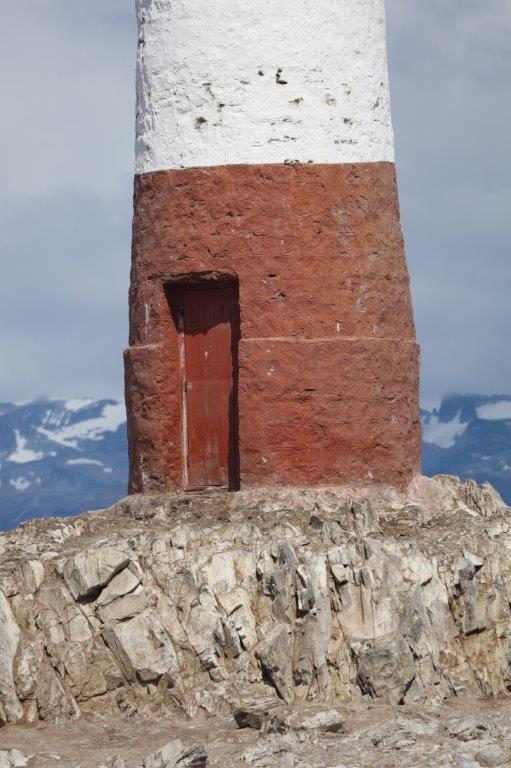 There was quite a bunch of seals inhabiting the rocky shores of this island…
There was quite a bunch of seals inhabiting the rocky shores of this island…
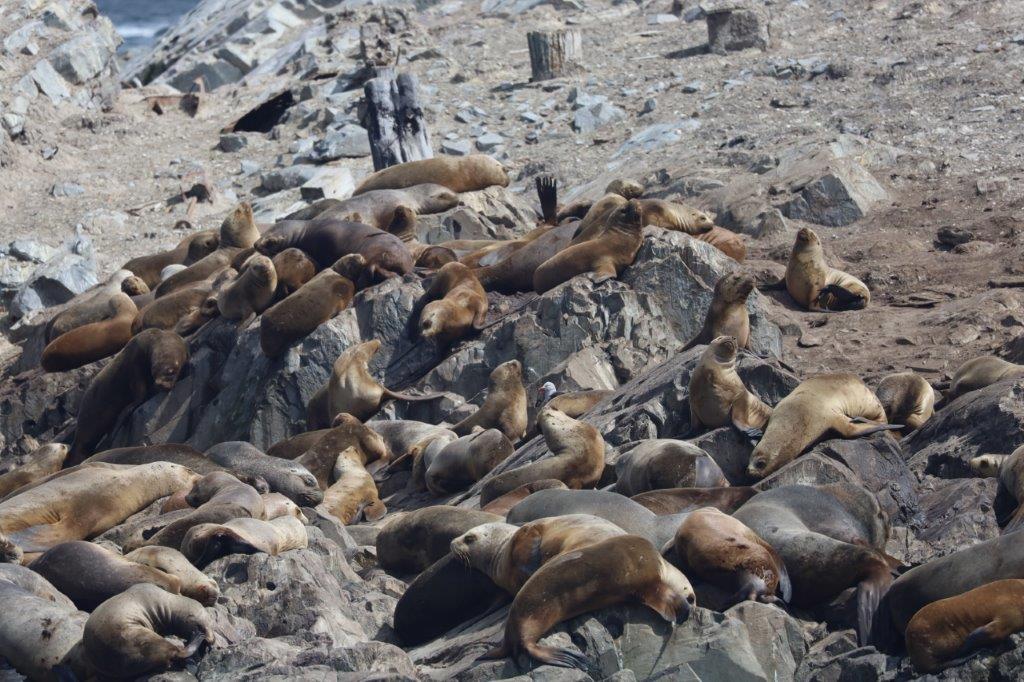
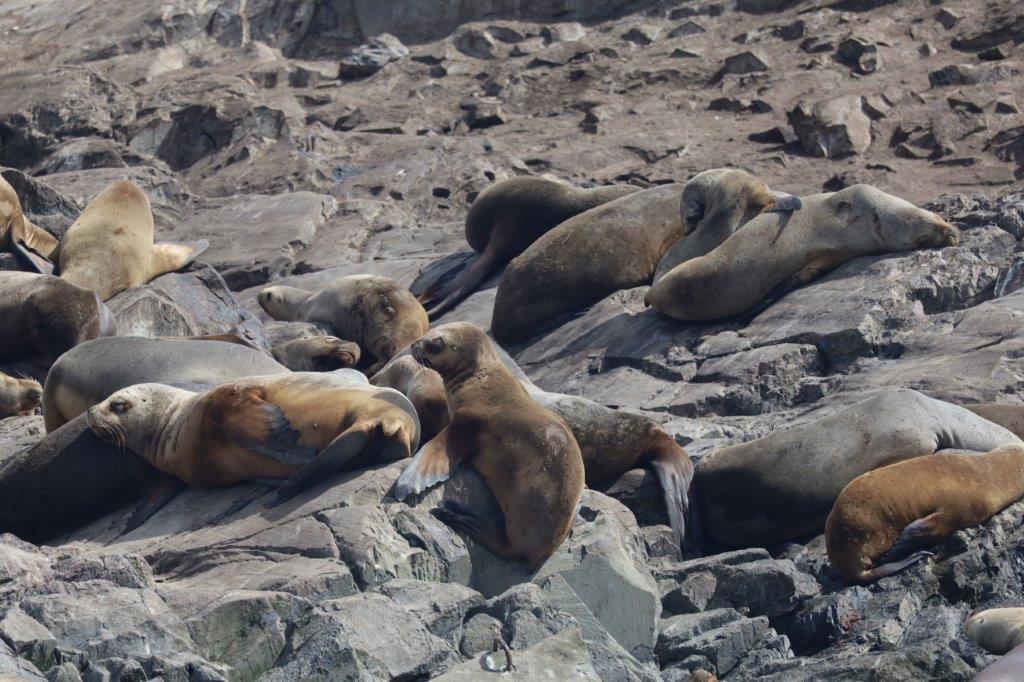
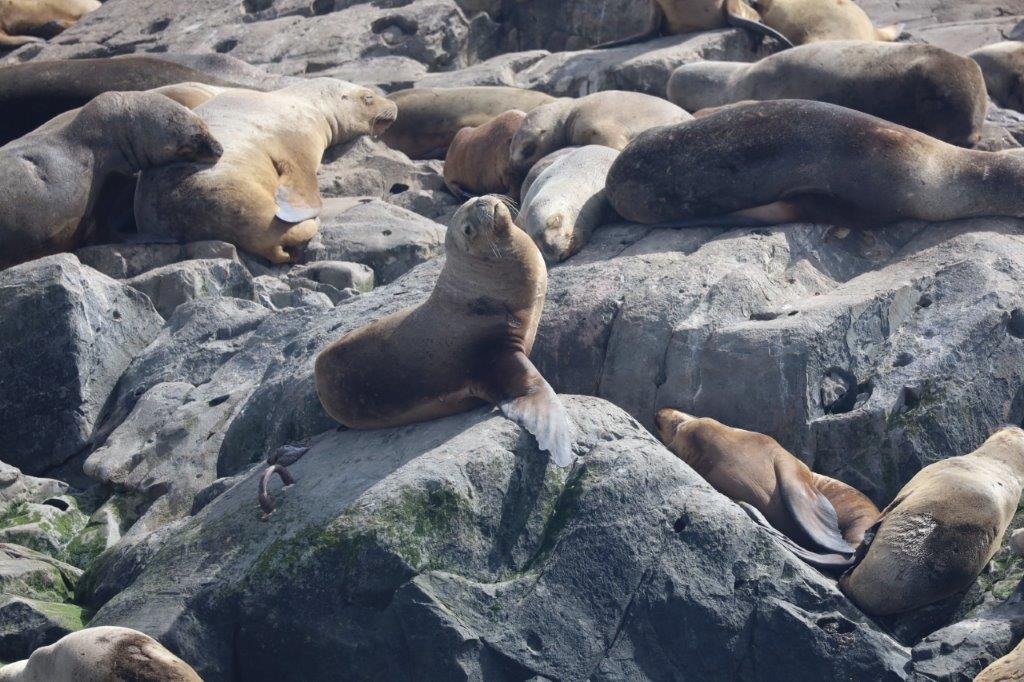 Seals are real acrobats when leaving the water and climbing a steep coast…
Seals are real acrobats when leaving the water and climbing a steep coast…
 …others are strutting over the beach, head high and clearly holding themselves above the plebs surrounding them.
…others are strutting over the beach, head high and clearly holding themselves above the plebs surrounding them.
 And then there are those who seek comfort in eachothers company…
And then there are those who seek comfort in eachothers company…
… and the expressions of sheer content on their faces say it all…
… and those who keep calling for attention…
Return to Ushuaia
The boat now turned back and after a few last beautiful views from the lighthouse…
…and the seals…
…it sailed back to Ushuaia…
After unboarding, The Wandelgek had a quick lunch in the main shopping street of Ushuaia and saw another football match. The Dutch team wasn’t playing though.

